The Best Protein Powders And What To Look For When Buying
Find the best protein powder to support your training with expert advice on what to look out for and our tasting notes
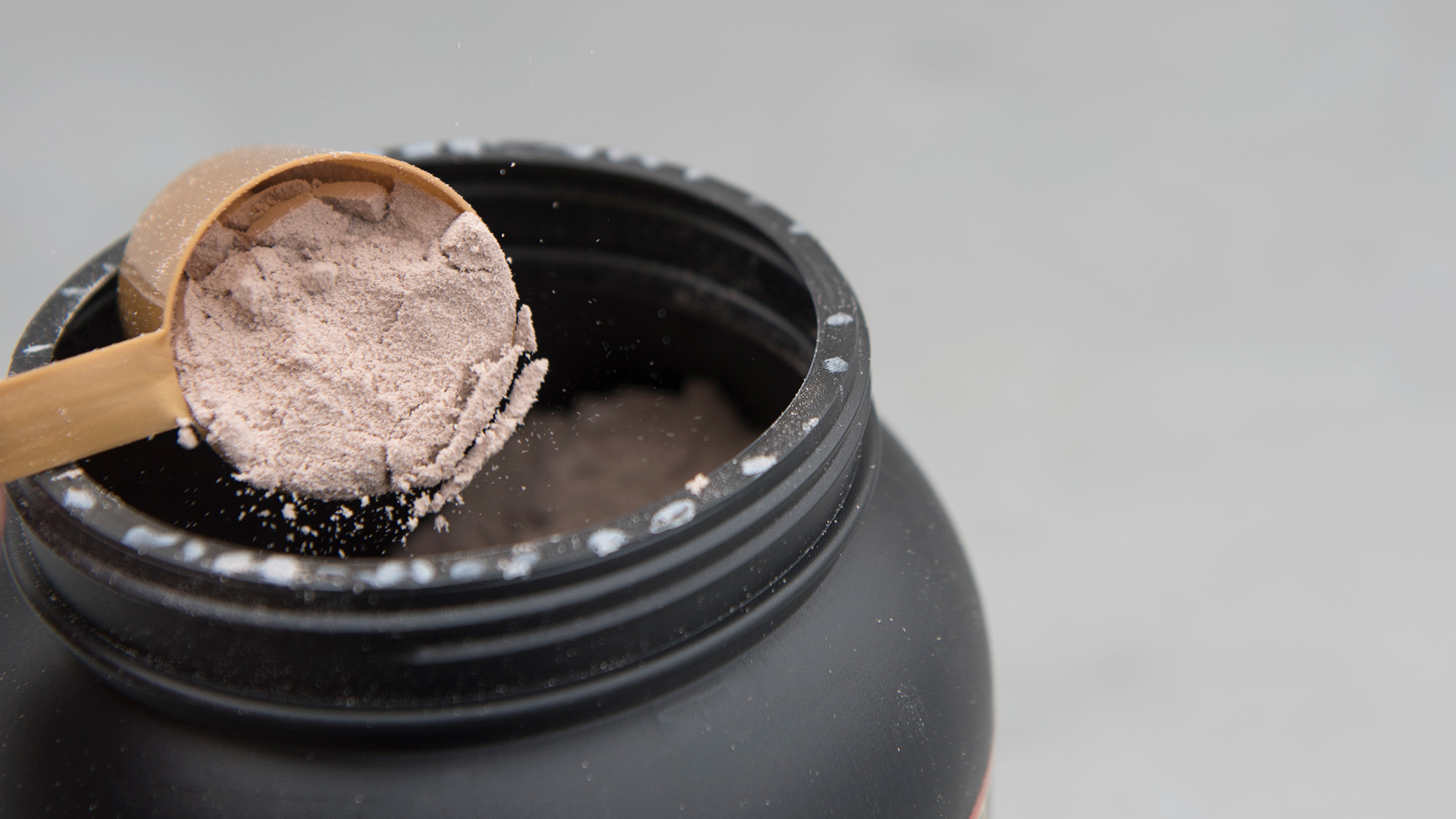
1. The Quick List ↴
2. Best Overall: Optimum Nutrition Gold Standard 100% Whey
3. Best Value: Bulk Pure Whey Protein
4. Best Clear Whey: Healthspan All Blacks Clear Whey Protein Isolate
5. Best For Muscle Gain: Innermost The Strong Protein
6. Best For Weight Loss: Protein Works Clear Diet Whey Protein
7. Best For Before Bed: Foodspring x Davina McCall Protein + Relax
8. Best Tasting: Dymatize Iso100
9. Most Indulgent-tasting: Grenade Protein Powder
10. Best For Daily Use: Smart Protein Whey Complete
11. Buying Advice
12. Types of Protein Powder
13. Glossary
While few, if any, amateur athletes need protein powder to support their exercise regime, it can be a highly convenient way to ensure you have all the fuel required to repair and build muscle after a workout.
You might assume that all of them do the same job, but that’s not the case. Coach spoke to Dr Daniel Fenton, clinical director and GP at London Doctors Clinic, and Lily Chapman, a performance coach and nutritionist at digital coaching site P3RFORM, about the differences between protein powders, how much price matters and whether they contain any ingredients you should be wary of. I then assessed the best protein powders out there using Fenton and Chapman’s criteria and tasted them too, so you have a better idea of what you’re buying.
Fenton’s in-depth advice is below, but here’s his takeaway: “I suggest you choose a low-fat, low-carbohydrate, high-protein powder. While you require all three to aid muscle development, balance is key.”
The good news is those three qualities describe the majority of the supplements in our selection of the best protein powders below.
The Quick List
In a hurry to know which protein powders are best? I've listed the top-scoring products in various categories here. Click on the link to jump to the full review with specs and tasting notes further down the page.
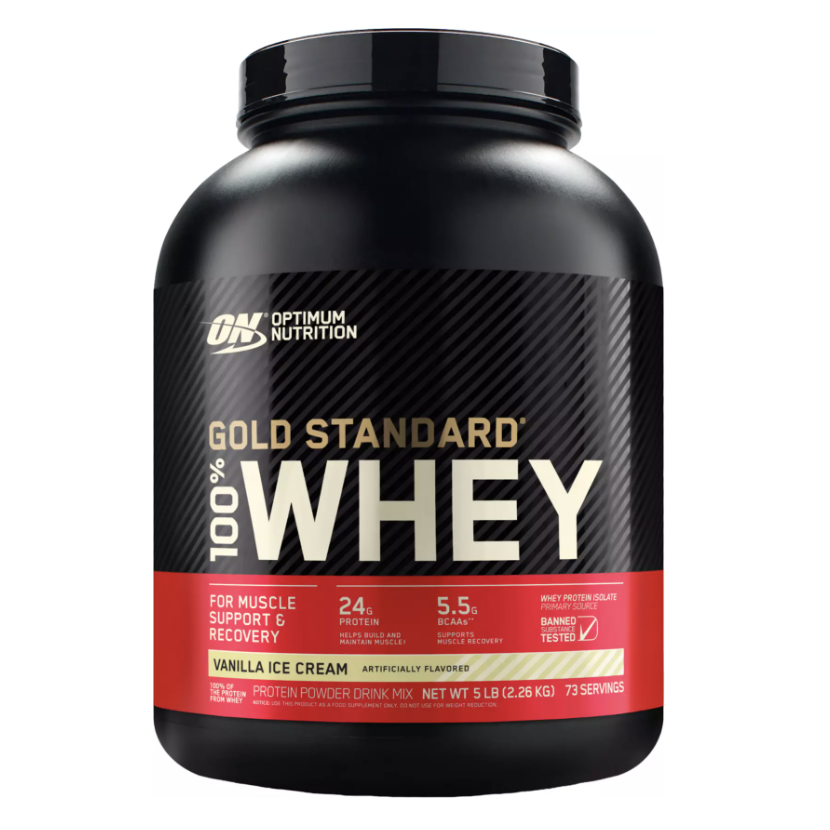
Best Overall
It's punchy to call a product “gold standard” but this lives up to the name. This powder delivers a decent 24g protein hit while tasting deliciously chocolatey and mixing effortlessly into a thick, creamy drink. The only downside is the high price.
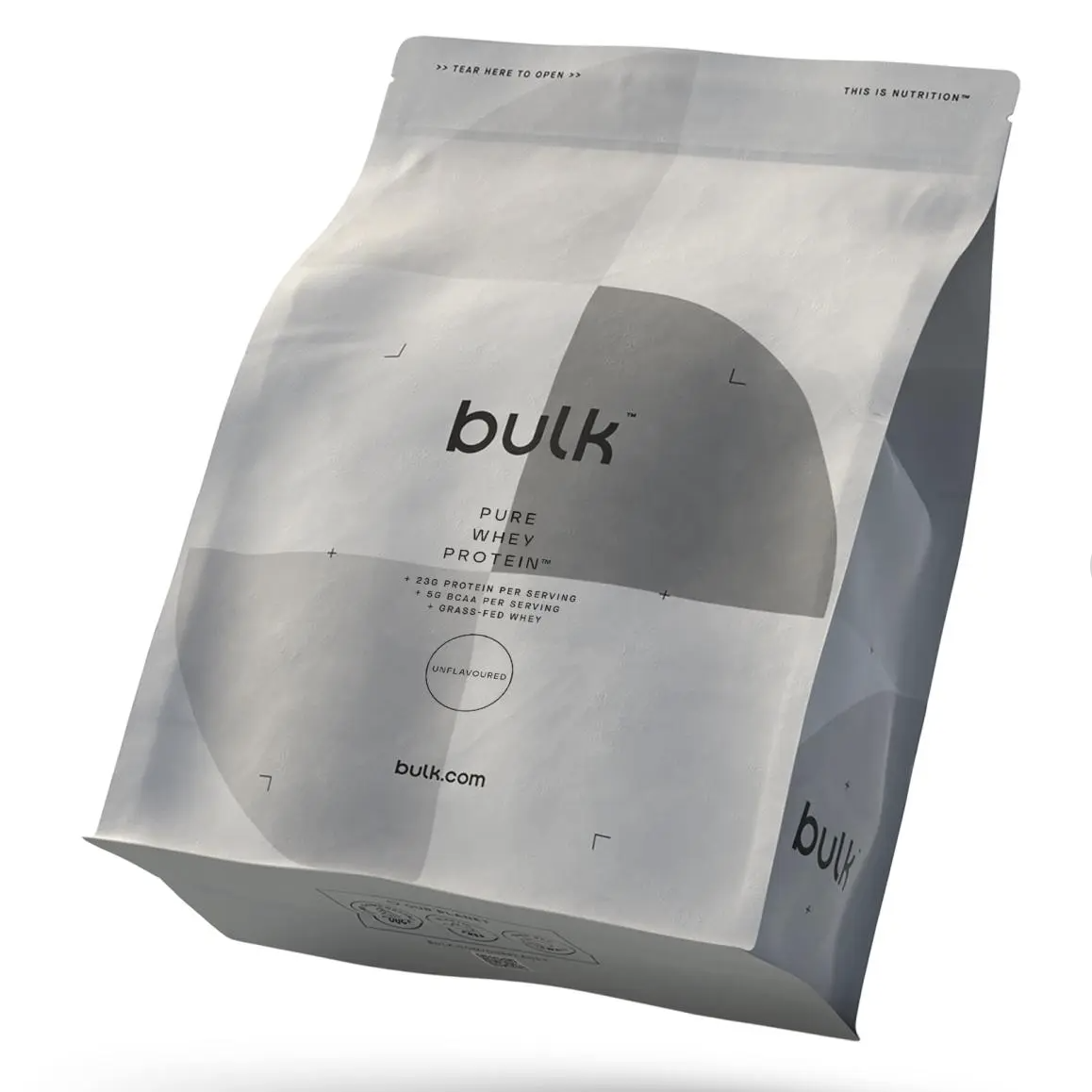
Best Value
Bulk’s Pure Whey Protein delivers solid macros, with 22g of protein and 1.2g of both carbs and sugars. It can usually be snapped up at an attractive price too, thanks to Bulk’s seemingly ever-present discounts, which slash the cost dramatically.
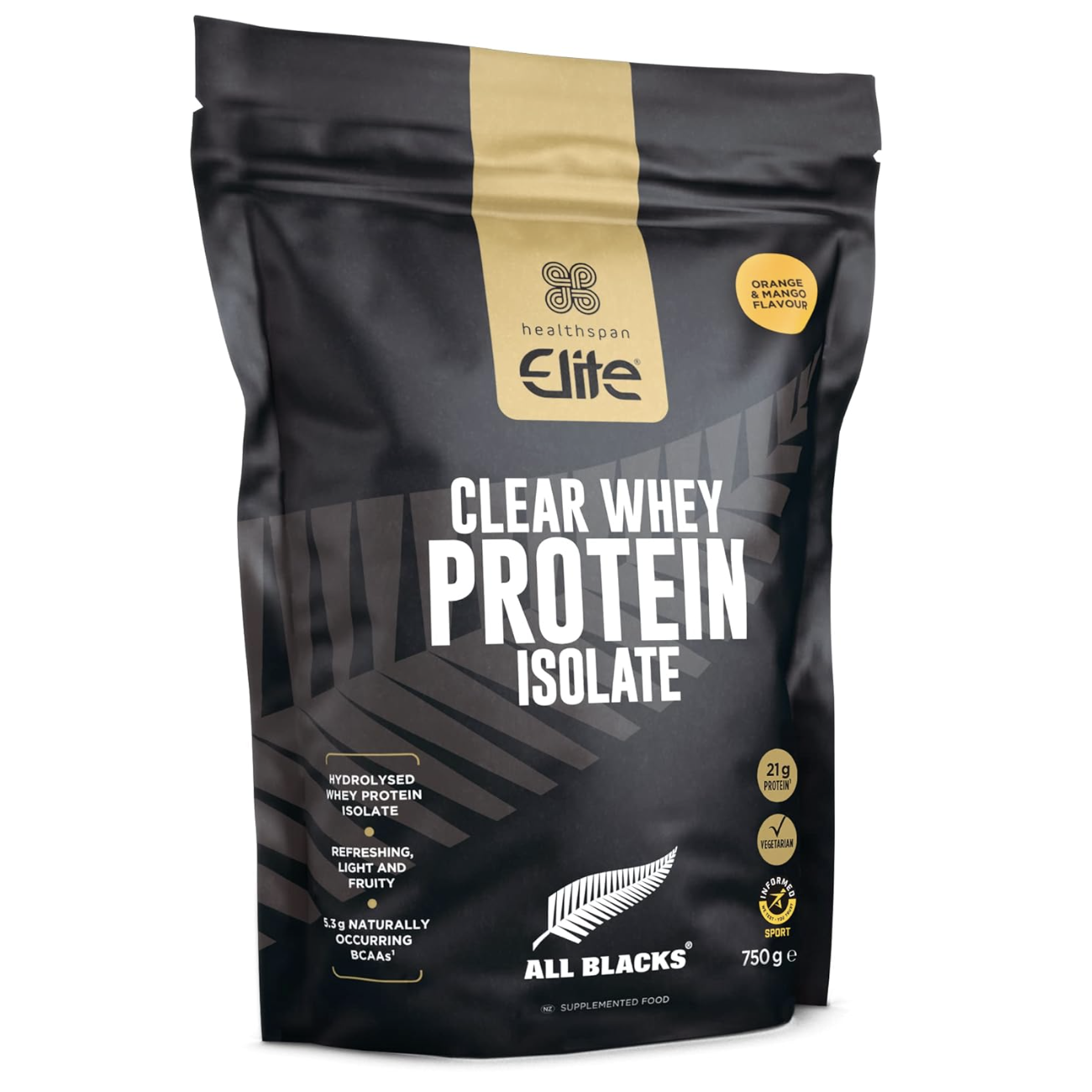
Best Clear Whey
Sick of creamy shakes leaving you feeling heavy after a hard session? Healthspan’s All Blacks-approved powder makes for a lighter post-workout drink. There are only two flavors to choose from, but they’re both refreshing and downright delicious.
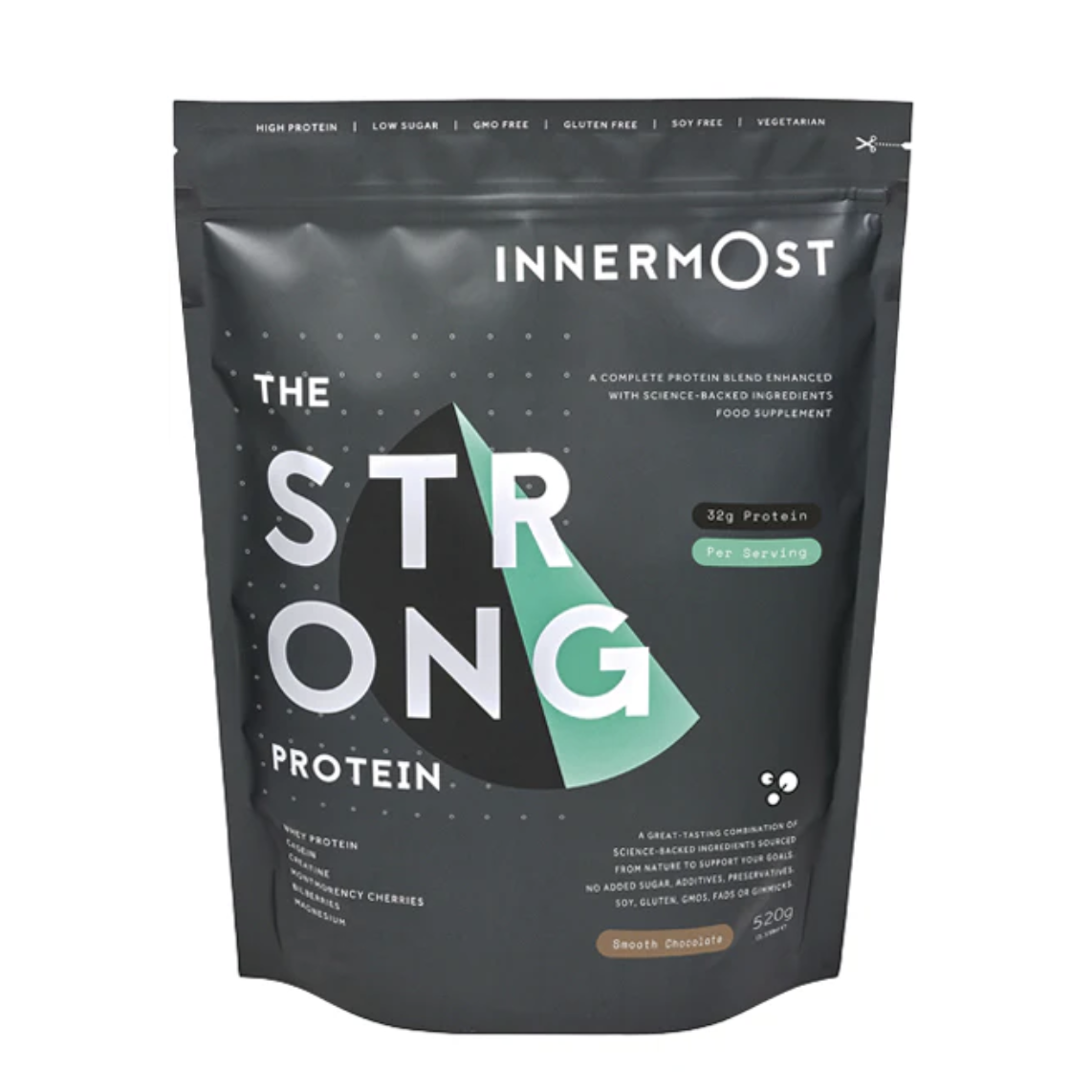
Best For Muscle Gain
Most powders provide a respectable 20g or so of protein per shake. But if you’re targeting muscle gain, you might want a bit more to hit your daily protein quota. Innermost has 34g per serving, as well as 3g of creatine to support your strength gains.
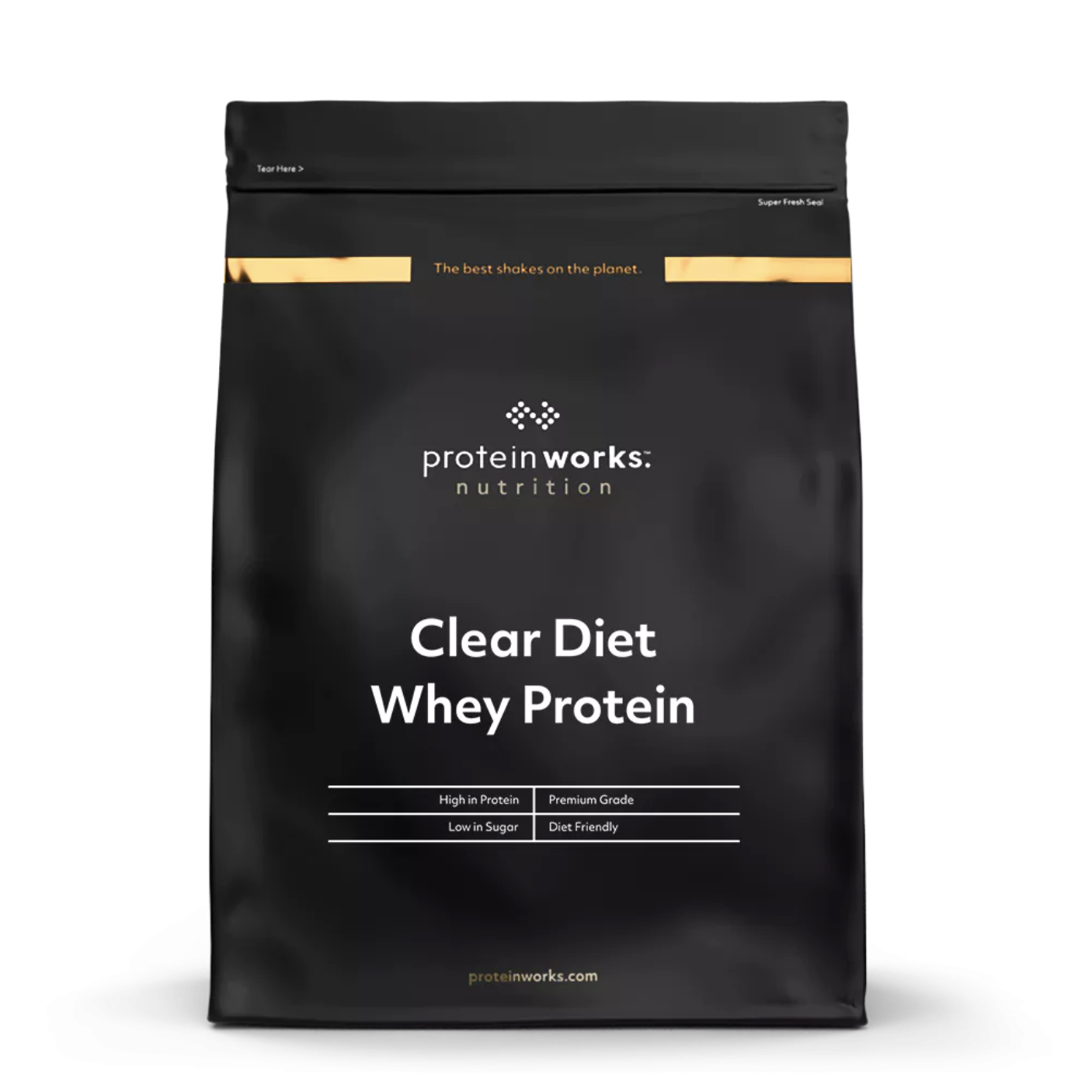
Best For Weight Loss
Light, refreshing and low in both carbs (0.5g) and calories (86); this is a top option if you’re looking to keep your protein intake high while losing weight. The 20g of protein per serving is hydrolyzed too, making it easier to digest.
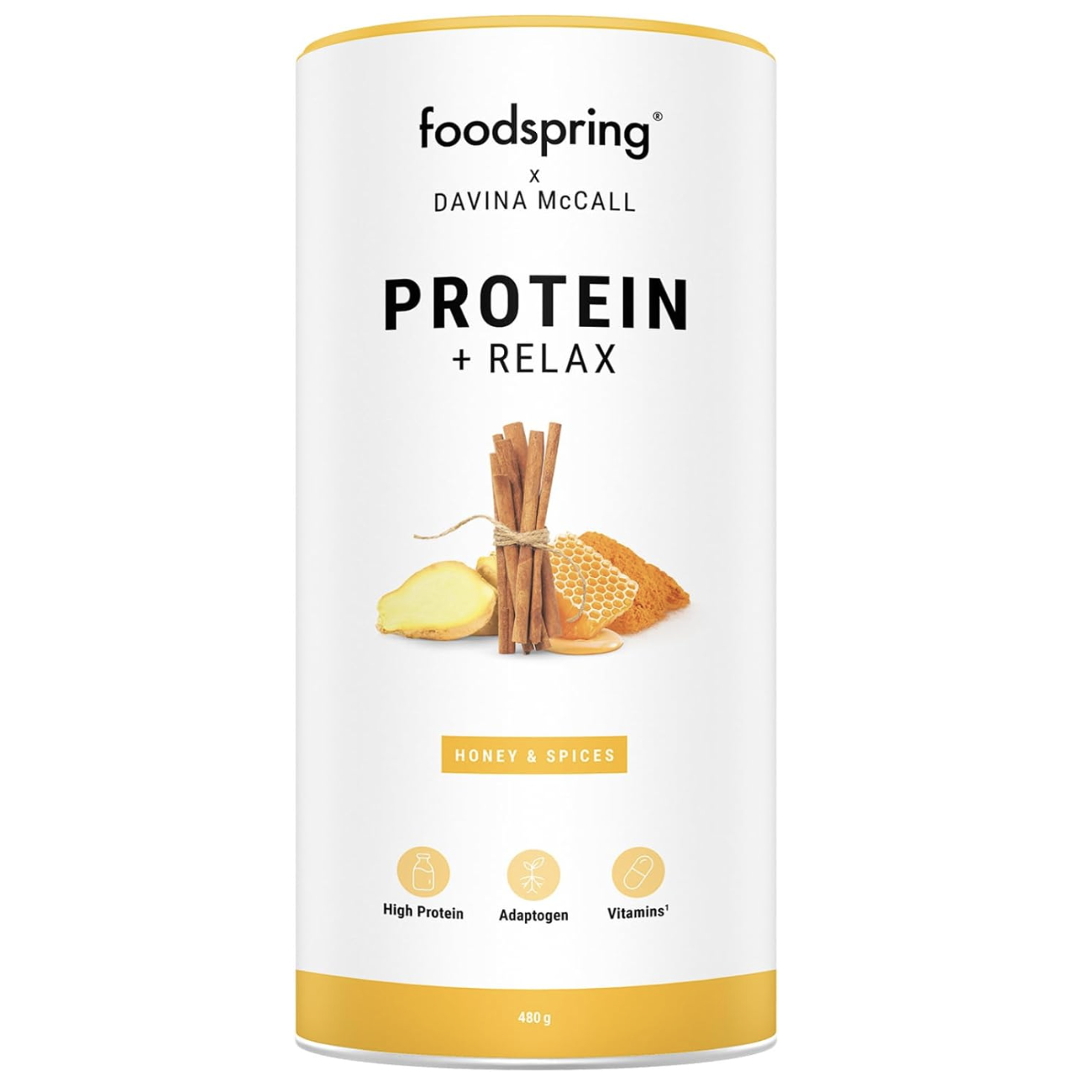
Best For Before Bed
I’m always skeptical of packet claims, so when Foodspring said this shake containing ashwagandha and slow-absorbing casein protein would help me relax, I took it with a (figurative) pinch of salt. But after taking it before bed for a few nights, my Whoop recovery score soared. It’s tasty too, which helps.
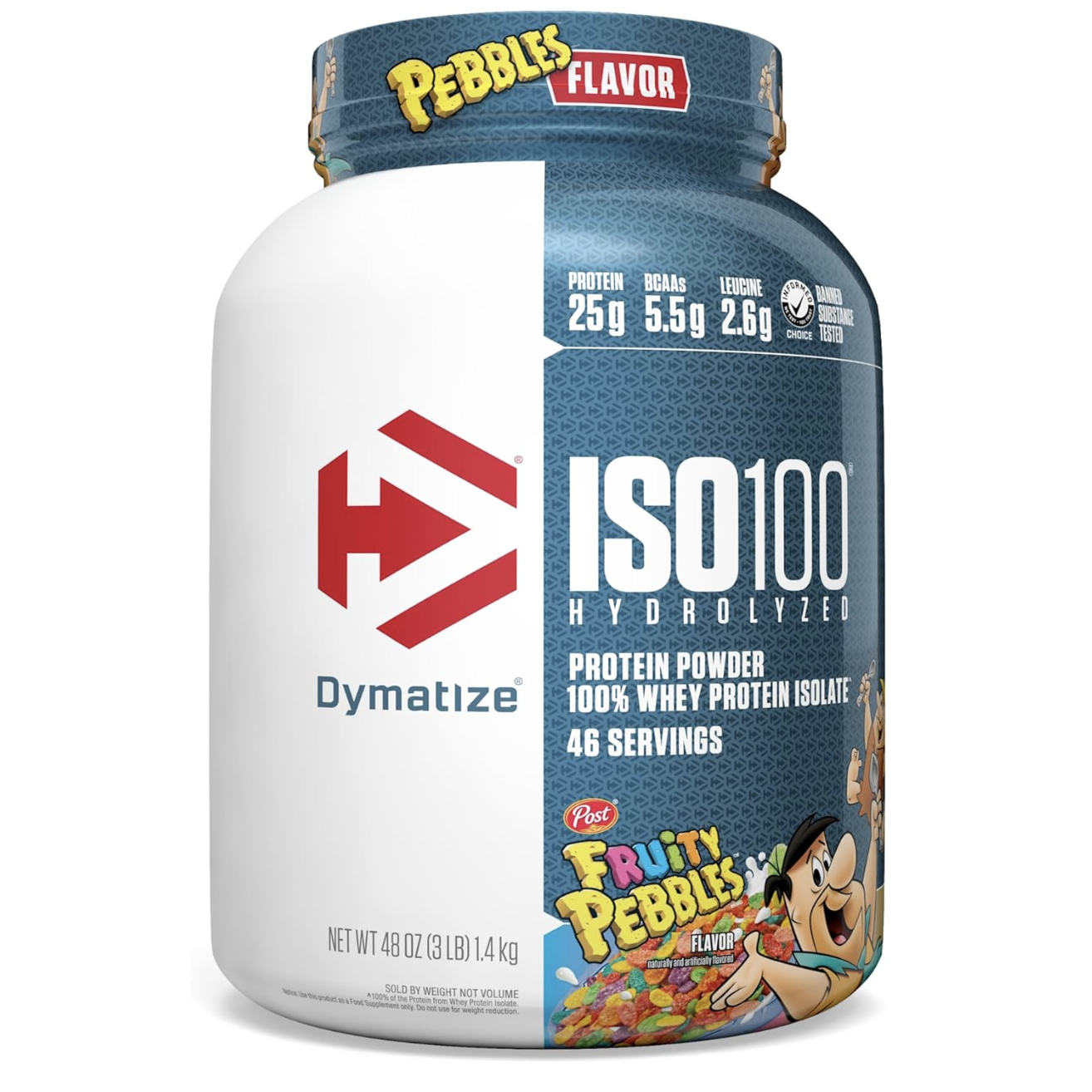
Best Tasting
If you’re bored of the chocolate/vanilla/strawberry-dominated protein powder game, Dymatize has you covered. It offers tasty collabs with the likes of Fruity Pebbles cereal and, more recently, Dunkin’ Donuts to blast flavor boredom into oblivion. They’re made with fast-absorbing hydrolyzed whey, making them a great post-workout option.
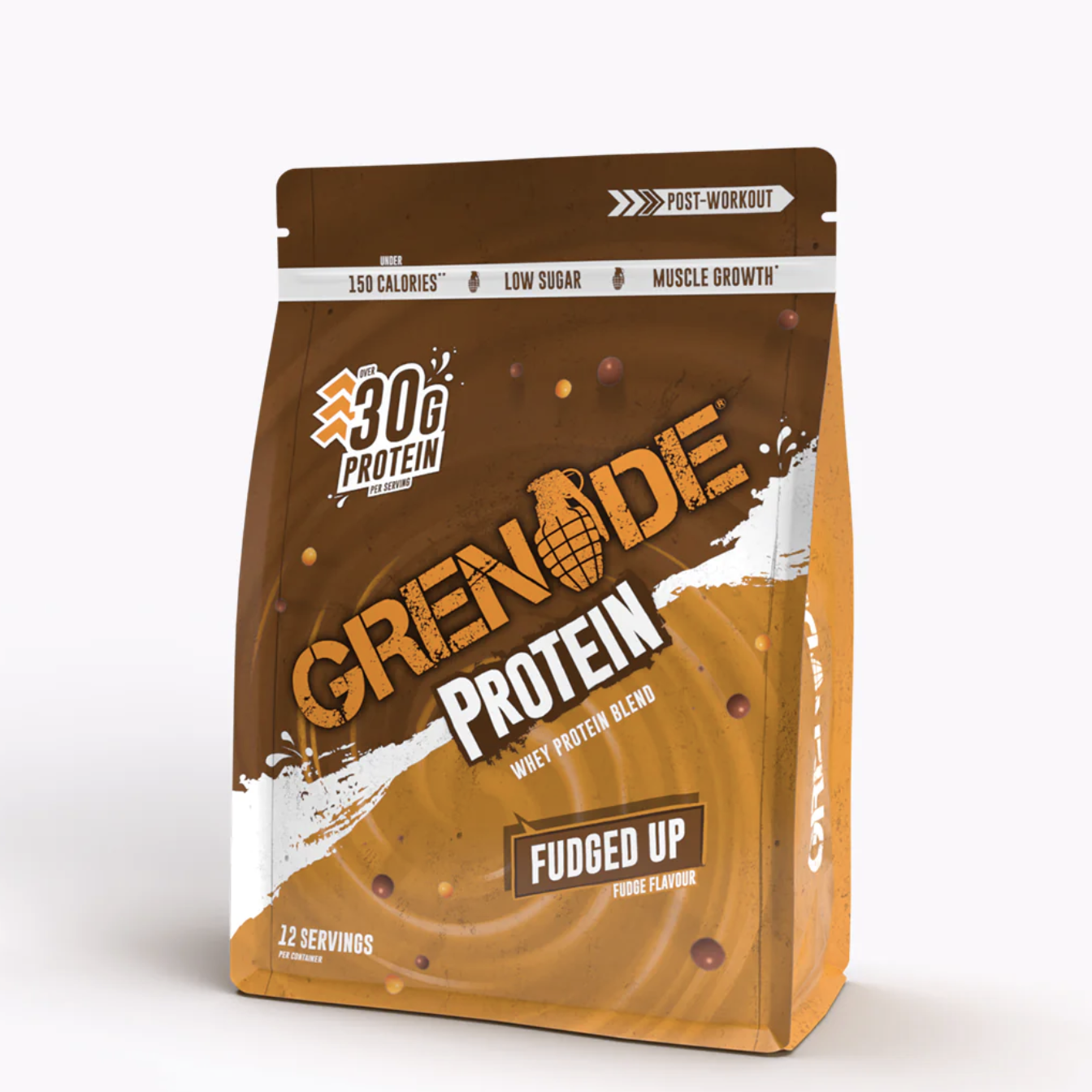
Most Indulgent-tasting
Thick, creamy and rich—this Grenade protein powder is delicious, and it mixes easily too, which is always a bonus. The larger 40g serving size means there are only 12 shakes per pouch, but each one offers a generous 30g protein hit, 147 calories and very few fats, carbs or sugars.
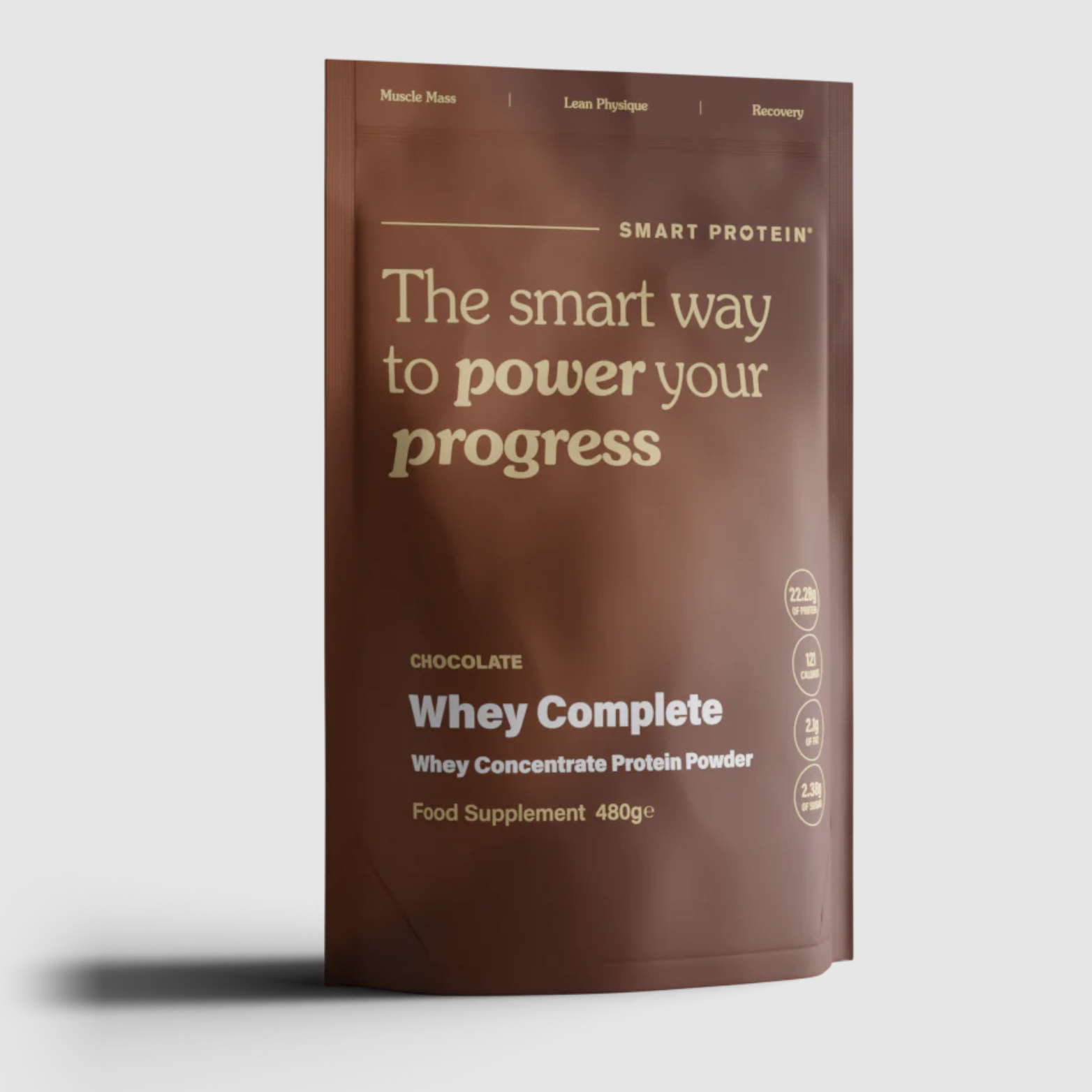
Best For Daily Use
Smart Protein’s first foray into the whey protein market is a good one, with more than 22g of protein per serving and minimal unwanted extras. The understated flavor isn’t going to knock your socks off, but it was very easy to drink, making it a more manageable alternative for daily use if that’s what you’re after.
How I Choose The Best Protein Powders
You can trust Coach
Protein powders have been a staple part of my training plans for the last decade, topping up my tank to help me hit my daily protein quota (usually upwards of 2g per kg of bodyweight, depending on my goals).
In that time I’ve tried a wide variety of supplements, and that number has increased since becoming Coach’s chief protein powder tester. So if it’s a tasty shake you’re after, I’m your guy.
My laptop is home to a spreadsheet filled with scores and notes for every protein powder I’ve tested. Each one is rated for its nutritional offering and affordability, as well as its taste, texture and mixability.
To save you from adding an unnecessary spreadsheet into your life, I’ve summarized this info below in a far more easy-to-digest format, including reasons to buy, reasons to avoid and my final verdict on each one.
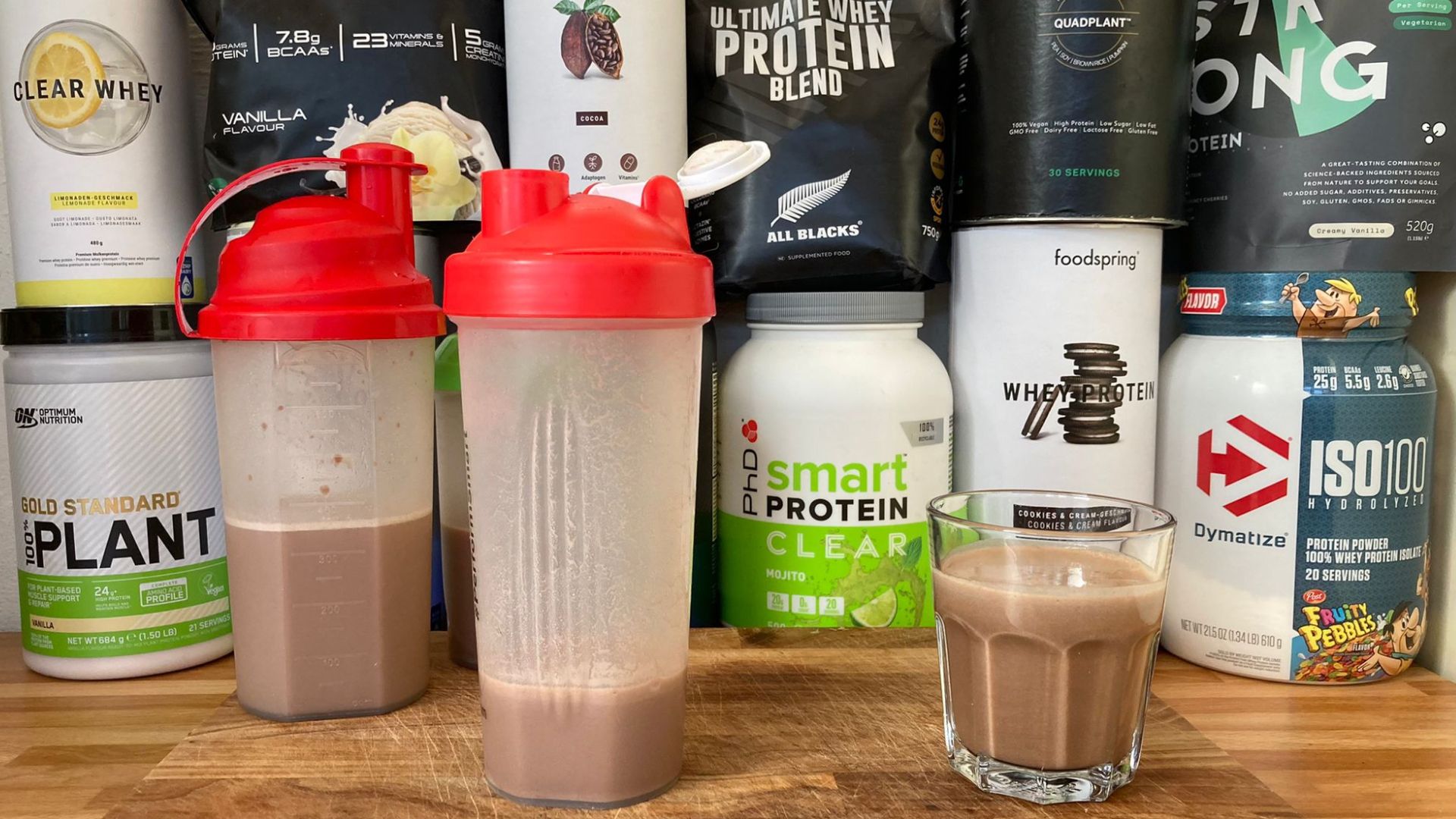
The Best Protein Powders
I’ve tried a lot of protein powders of all different stripes, but the most common and popular type is whey protein which is mostly what we’ll cover here, with a couple of exceptions that include slower-releasing casein protein (see the section on types of protein powder).
For more about the benefits of casein, head over to our guide to the best casein protein powders. And if you prefer a plant-powered protein pick-me-up, our round up of the best vegan protein powders has a wide range of tried-and-tested options.
Best Overall
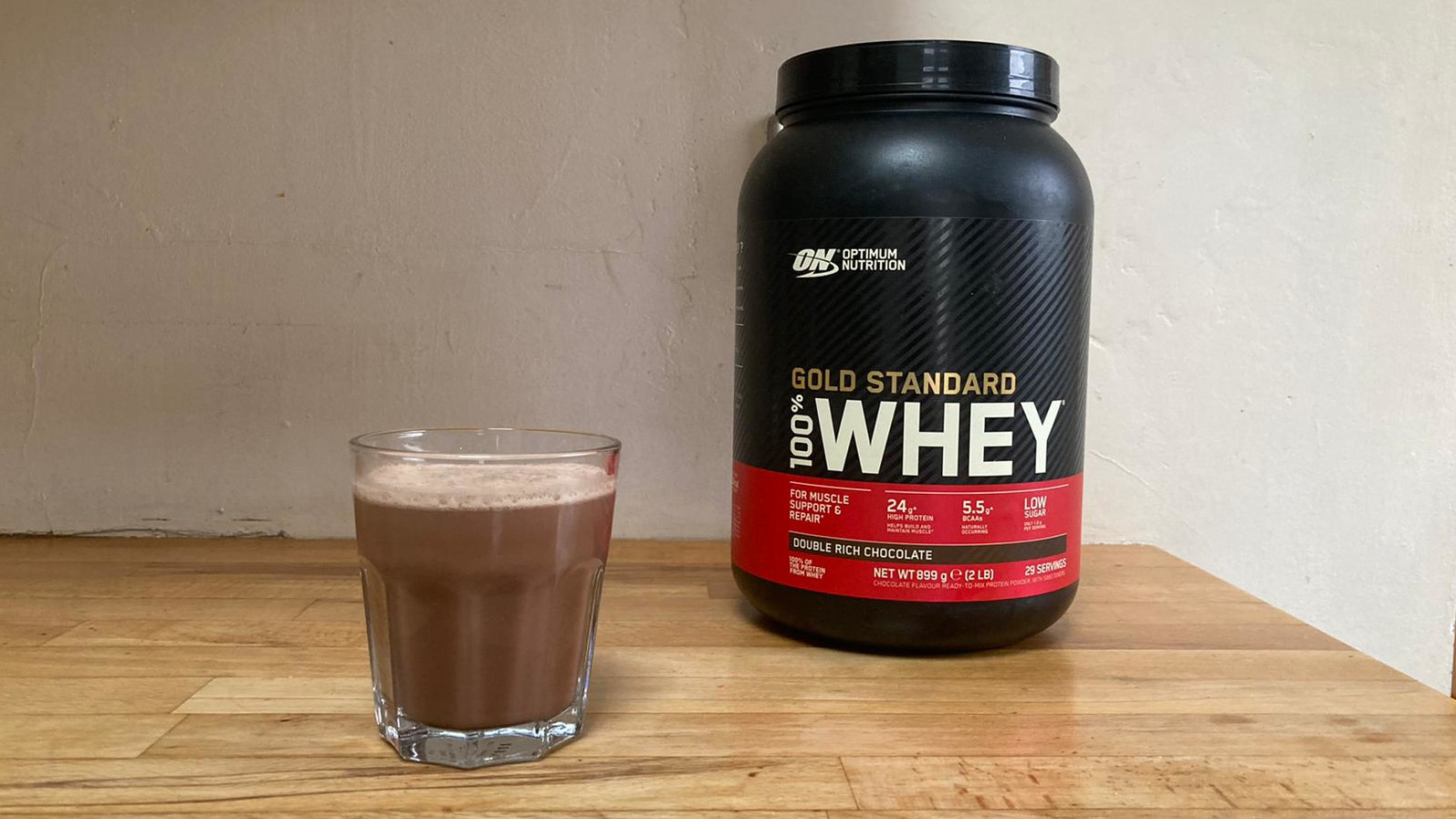
1. Optimum Nutrition Gold Standard 100% Whey
Specifications
Reasons to buy
Reasons to avoid
It’s bold to call your product “gold standard” but in this case it’s not unwarranted. It’s reasonably priced, with a chunky serving of protein, under 2g of carbs and 116 calories per 31g serving. With 29 servings in each standard 908g tub you won’t have to replace it as often as others, and there are plenty of flavours to choose from.
Taste test: Double rich chocolate This shake marked a notable step up from other similarly-priced options I’ve tried, bettering its rivals’ taste and texture. The double rich chocolate flavour tastes more decadent than a supplement should, and the powder mixed well too. A couple of shakes produced a smooth, thick milkshake-like drink that masked the fact it was mixed with water. Despite this, it didn’t feel as heavy in my stomach as other protein powders I’ve tried.—Harry Bullmore
Best Value
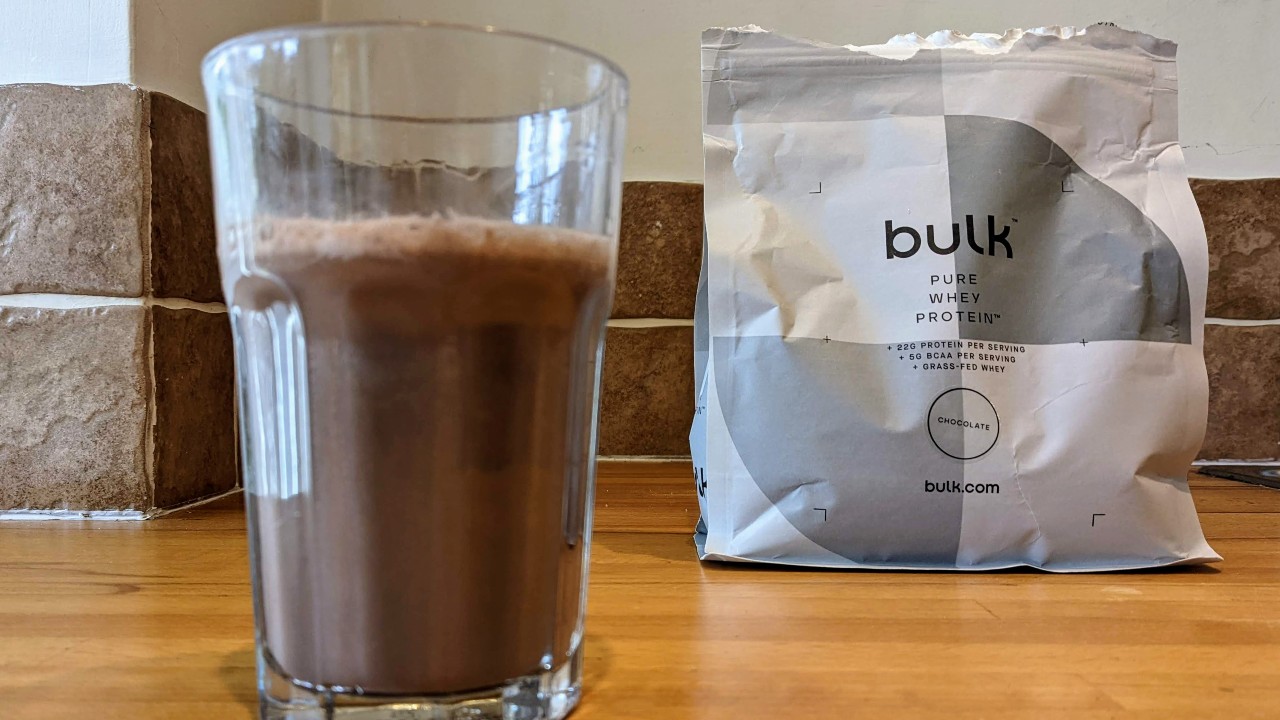
2. Bulk Pure Whey Protein
Specifications
Reasons to buy
Reasons to avoid
Bulk is used by heavyweight boxer Anthony Joshua—and if it’s good enough for AJ there’s a high chance it’s good enough for you. With the variety of flavors available (including eight different chocolates), your tastebuds are sure to be tickled. Each serving packs a punch of 22g of protein, while the inclusion of 5g of branched-chain amino acids (BCAA) per serving is a nice touch at this price.
Taste test: Chocolate It says a lot about a protein powder if it tastes good with plain old water. The chocolate Pure Whey Protein didn’t take too much shaking to get silky smooth and the result was a flavoursome blend. Although there are powders out there that taste more like a real milkshake, the final result was most drinkable.—Charlie Allenby
Best Clear Whey
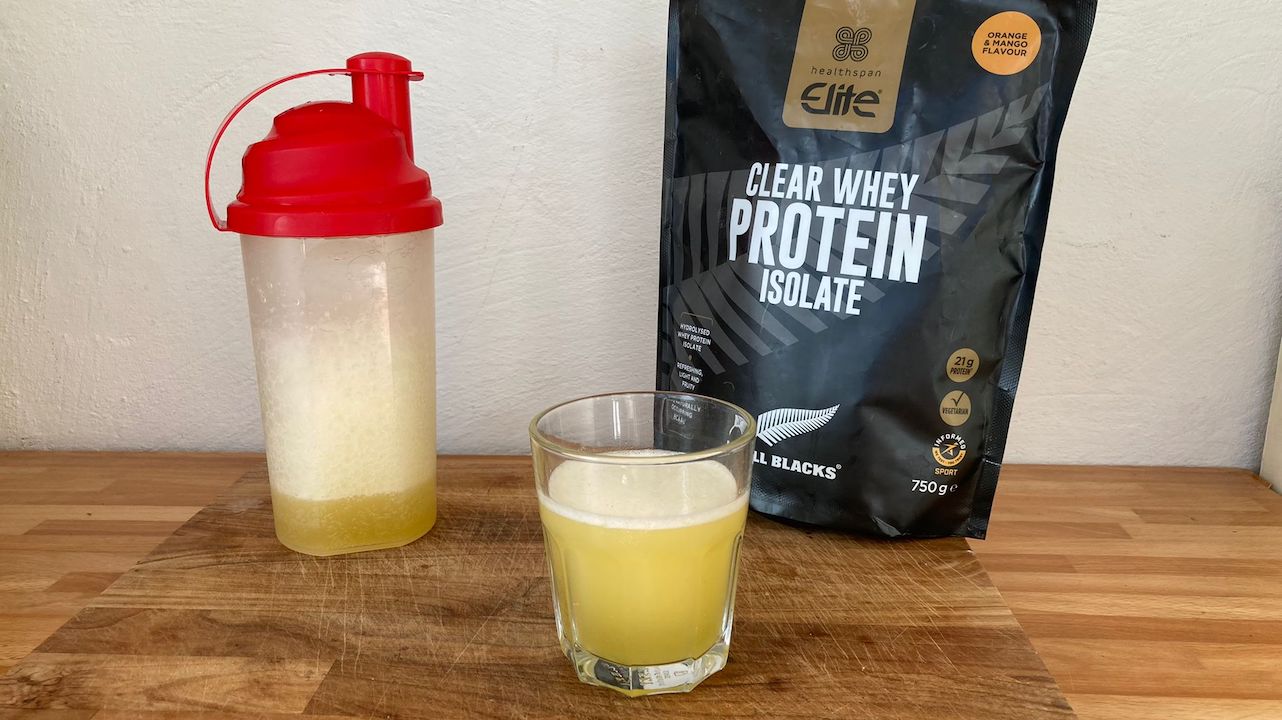
3. Healthspan Elite All Blacks Clear Whey Protein Isolate
Specifications
Reasons to buy
Reasons to avoid
Clear whey is great in principle, offering a drinkable protein top-up without the heavy creaminess of standard whey shakes. But it can be hit-and-miss. This supp is one of the winners, balancing great taste with a nutritional profile we can get behind—plenty of protein without unwanted sugars and carbs.
Taste test: Orange and mango I was impressed with both flavors, but the orange and mango option just edged this contest. It took a few more seconds of shaking than other clear powders I’ve used, but after this the consistency was smooth and the taste was indiscernible from a refreshing fruit drink—extra impressive given the decent 21g of protein per serving.
Best For Muscle Gain
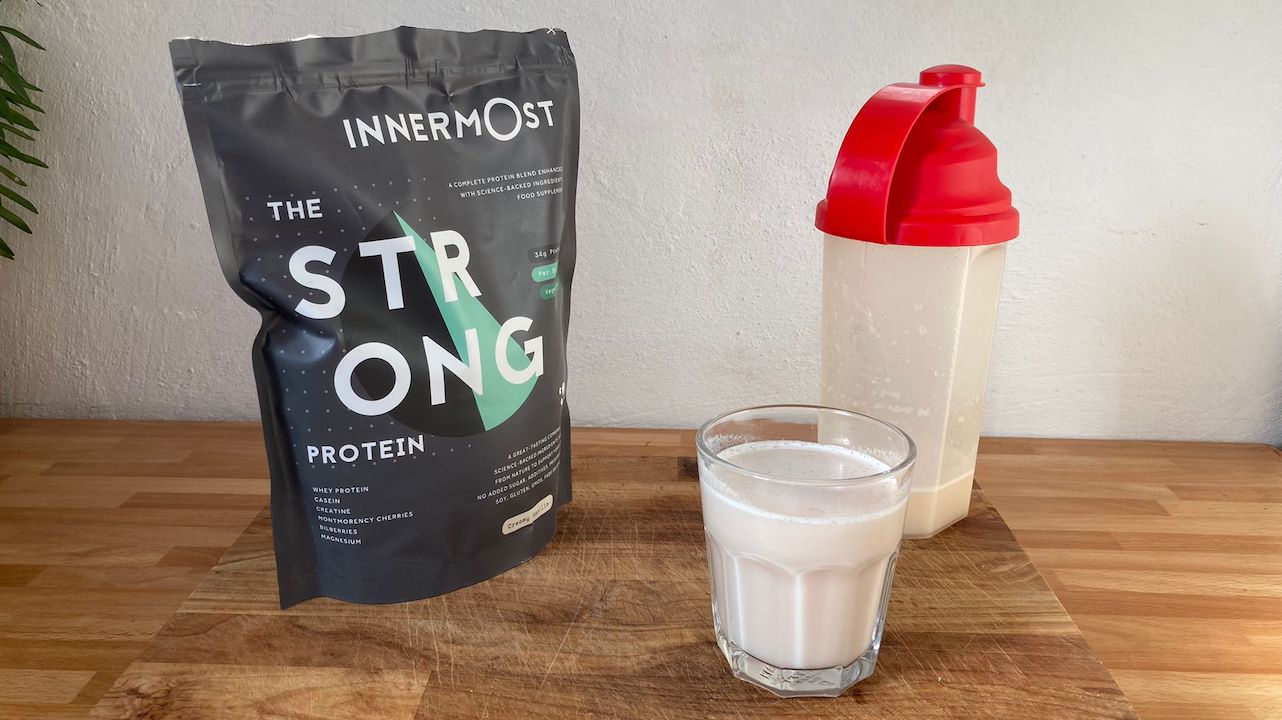
4. Innermost The Strong Protein
Specifications
Reasons to buy
Reasons to avoid
All protein powders offer at least a decent protein content—that comes with the territory. But Innermost always tries to give a little more. As well as a generous 34g of protein, each serving supplies 3g of power-boosting creatine and 5g of glutamine, which has been linked to reduced muscle soreness.
Taste test: Creamy vanilla I tested all four protein powders in Innermost’s range and the Strong Protein was a clear winner. I liked the combination of creatine, glutamine and a higher-than-average amount of protein, and was surprised to find the creamy vanilla flavor beat my default chocolate option in the flavor stakes. It blended immediately and tasted great. The texture was a little thin, but this might be remedied by mixing it with milk.
Best For Weight Loss
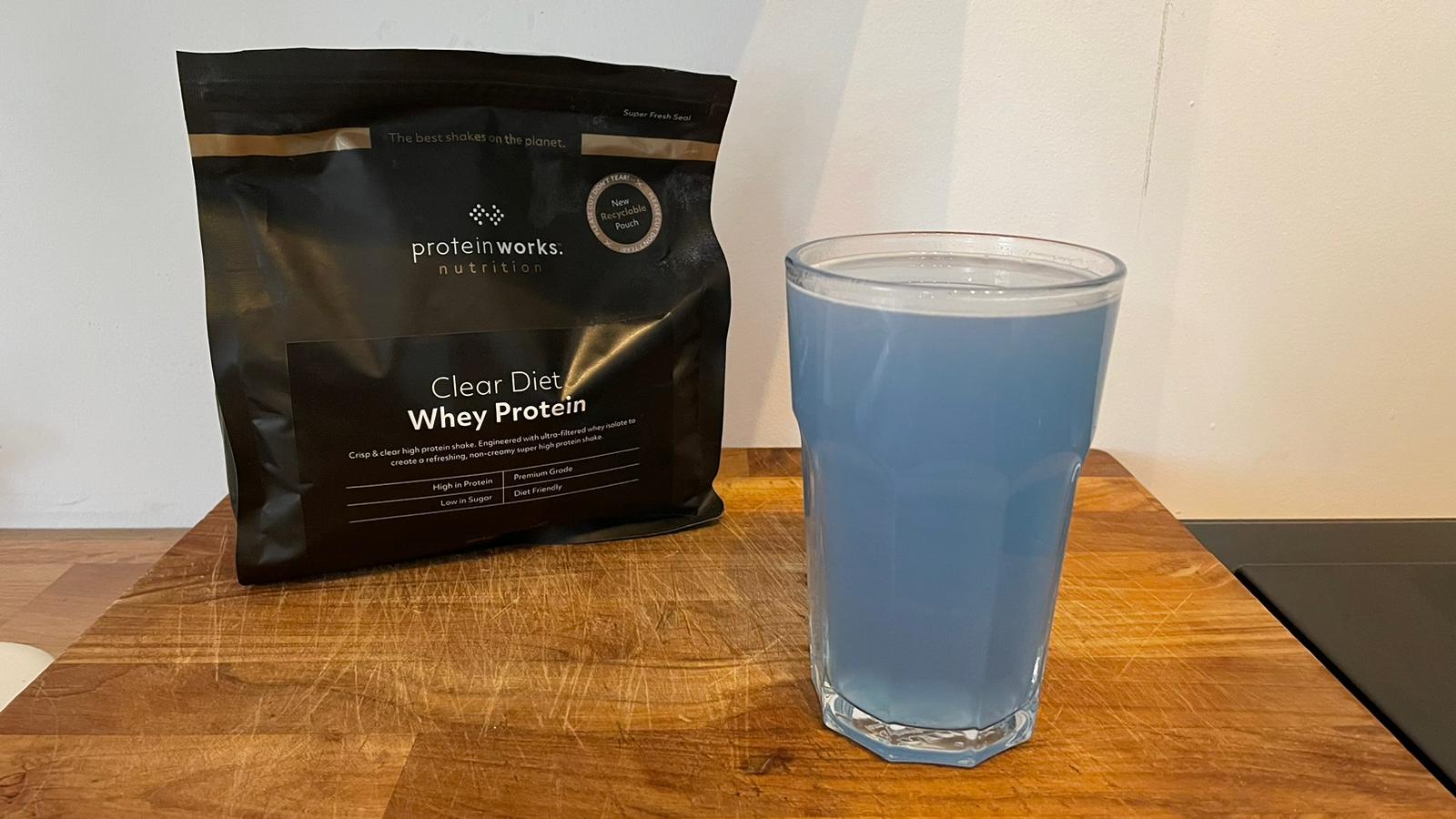
5. Protein Works Clear Diet Whey Protein
Specifications
Reasons to buy
Reasons to avoid
This is Protein Works’ premier clear diet whey, with just 86 calories per serving and less than a gram of carbs and sugar. It also packs 20g of hydrolyzed whey protein isolate for faster absorption and easier digestion—good news if you’re sensitive to lactose and struggle to find a protein powder that works for you.
Taste test: Blue raspberry Unlike other clear powders I’ve tried, this shake didn’t froth up uncontrollably or leave my shaker in need of a deep clean. Instead, it mixed immaculately with minimal shaking to make a light, refreshing drink. I liked the flavor too. I expected the blue raspberry to echo the sickening sweetness of candy from my childhood, but the flavor was surprisingly understated and enjoyable.
Best For Before Bed
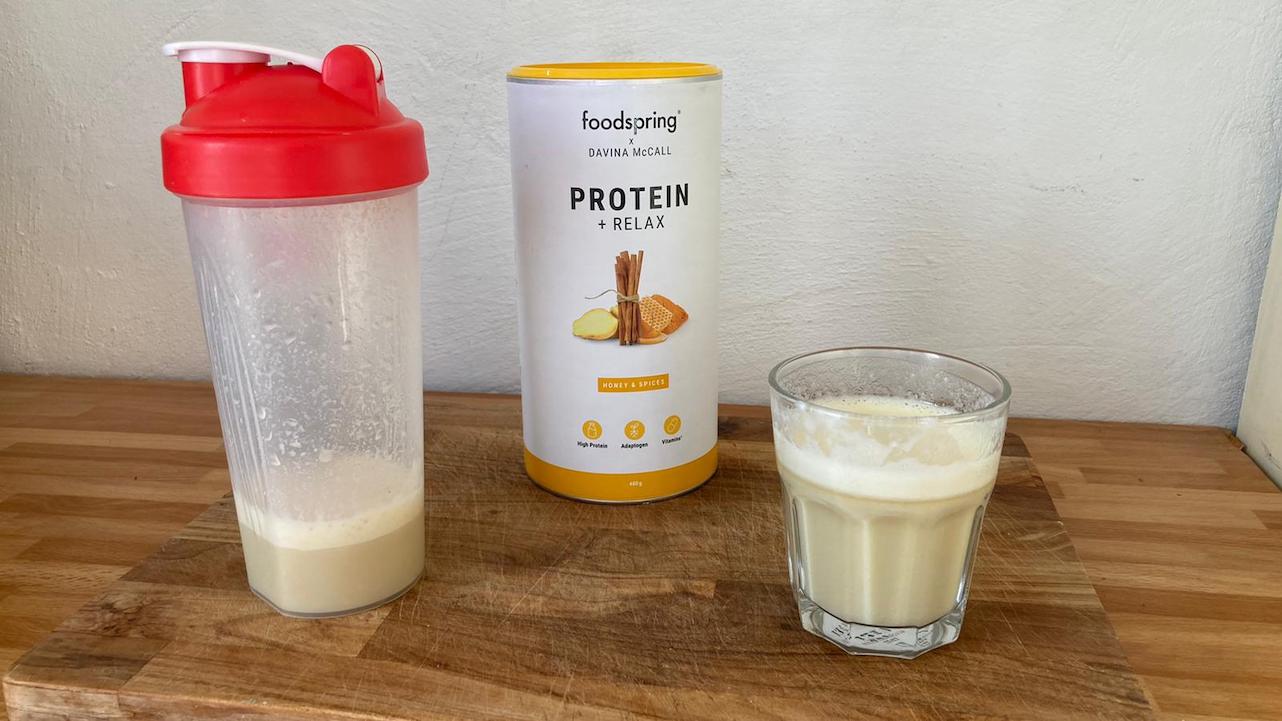
5. Foodspring x Davina McCall Protein + Relax
Specifications
Reasons to buy
Reasons to avoid
Released alongside a cocoa-flavored Protein + Focus drink, this supplement sets out to provide more than just a 22g helping of protein. The bulk of its protein comes in the form of slow-absorbing casein, helping support muscle recovery and growth overnight if you drink it before bed. It’s also enriched with a litany of vitamins including B12, B6, vitamins C and D, zinc, magnesium, calcium and iron, as well as the supplement of the moment, ashwagandha, which may boost strength and muscle growth and have a calming effect on the mind.
Taste test: Honey and spices This doesn’t taste like any other protein powder I’ve tried, especially if you heat it up (as Foodspring recommends). The honey and spices flavor is less stimulating than the artificial sweetness of rivals if you want a protein top-up before bed, and I found it far less dense than other casein drinks I’ve tried when looking to maximize overnight muscle growth.
Best Tasting
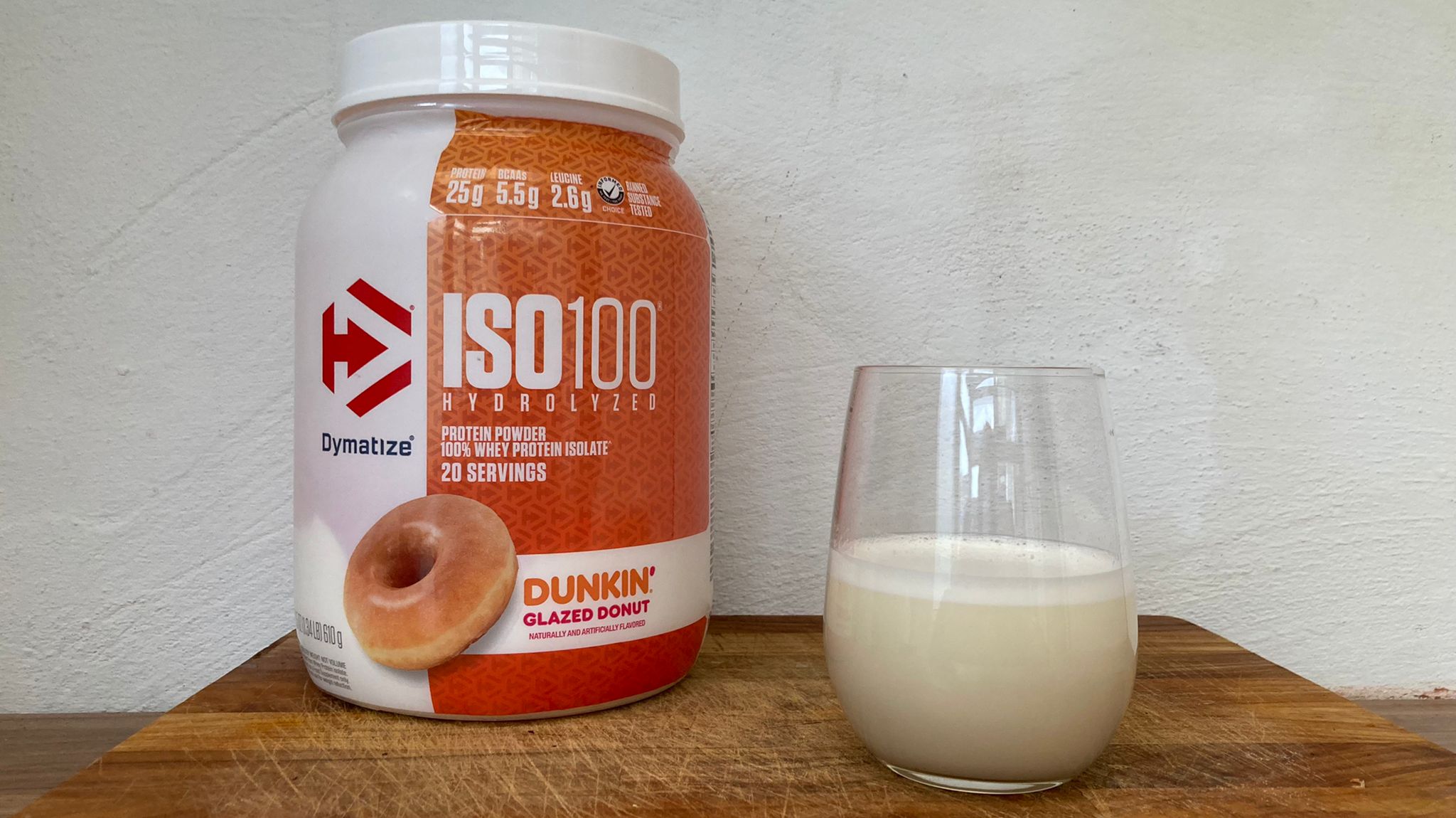
6. Dymatize Iso 100 Hydrolyzed
Specifications
Reasons to buy
Reasons to avoid
Dymatize has paired with the likes of Dunkin’ Donuts and Pebbles Cereal for its current crop of Iso100 flavors, making it a top choice for sweet-thing fiends. It has more than just high-profile partners too. Each drink has 25g of hydrolyzed whey protein for faster absorption, and just 120 calories.
Taste test: Dunkin’ glazed donut
Dymatize’s new Dunkin’ Glazed Donut option surpassed Fruity Pebbles to become my favorite flavor. It has the brand’s customary sweetness, and I found it does an impressive job of recreating the taste of glazed sugar in liquid form. This flavor may be too decadent for some, but if you’re looking to top-up your protein intake and satisfy a sweet tooth then it’s an ideal solution.
Most Indulgent-tasting
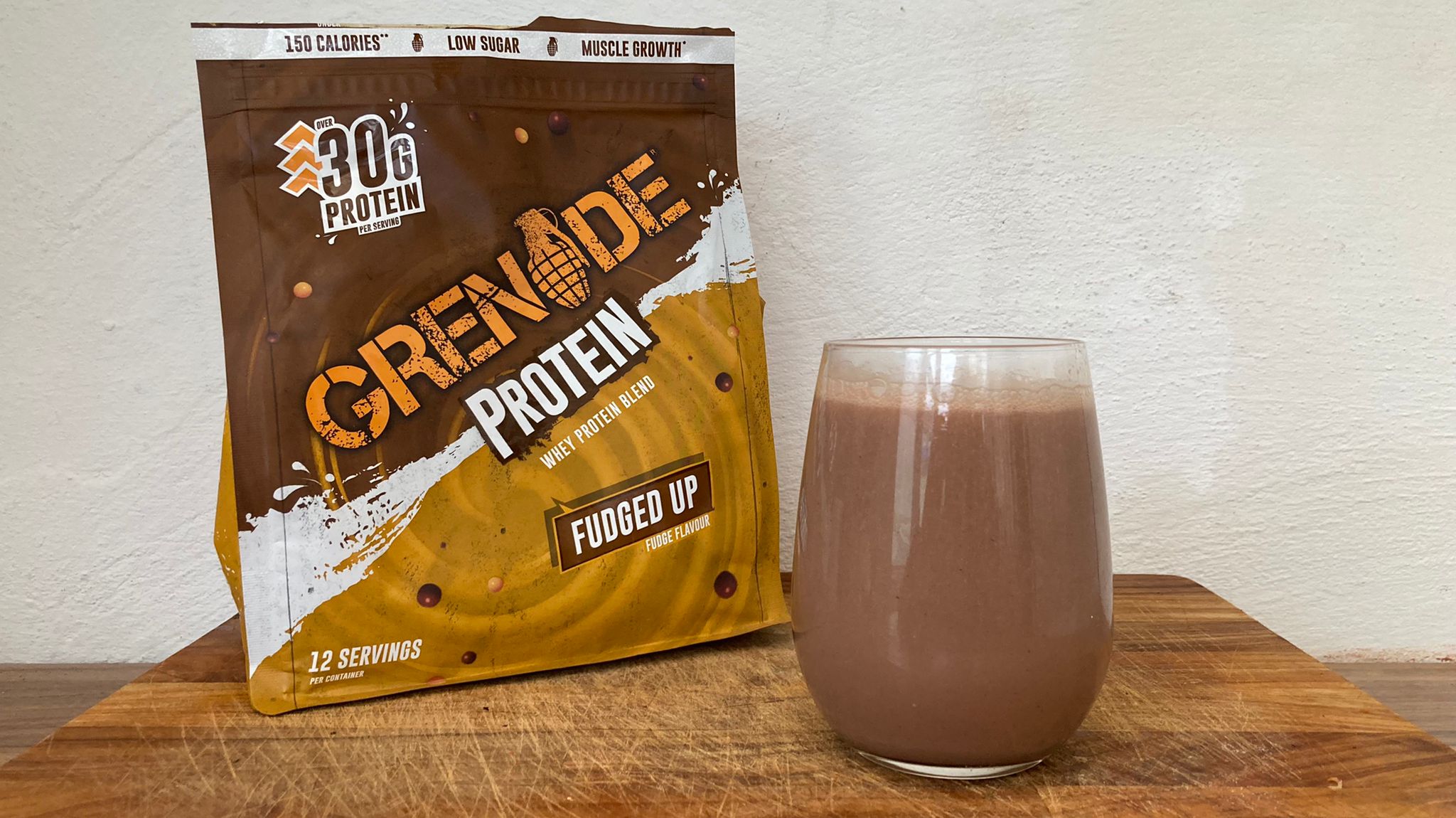
7. Grenade Protein Powder
Specifications
Reasons to buy
Reasons to avoid
This Grenade shake’s elevated protein (30g) and calorie (147) content makes it an attractive option for those looking to bulk up. The main drawback I found was that there wasn’t enough of it—I tested a 480g pouch containing 12 servings, which left me scraping the bottom of the bag in no time. The other option is a 2kg, 50-serving bag, which may be too much if you just want a month’s worth.
Taste test: Fudged up
Grenade does a better job than most at mimicking the thick, creamy texture of a bona fide milkshake, even when I mixed it with water. Despite the slightly larger (40g) serving size, there were no unwanted lumps after 10 seconds of shaking either. Add to this the fact that the fudge flavor not only tasted great but smelled great too, and you’ve got yourself an impressive protein powder.
Best For Daily Use
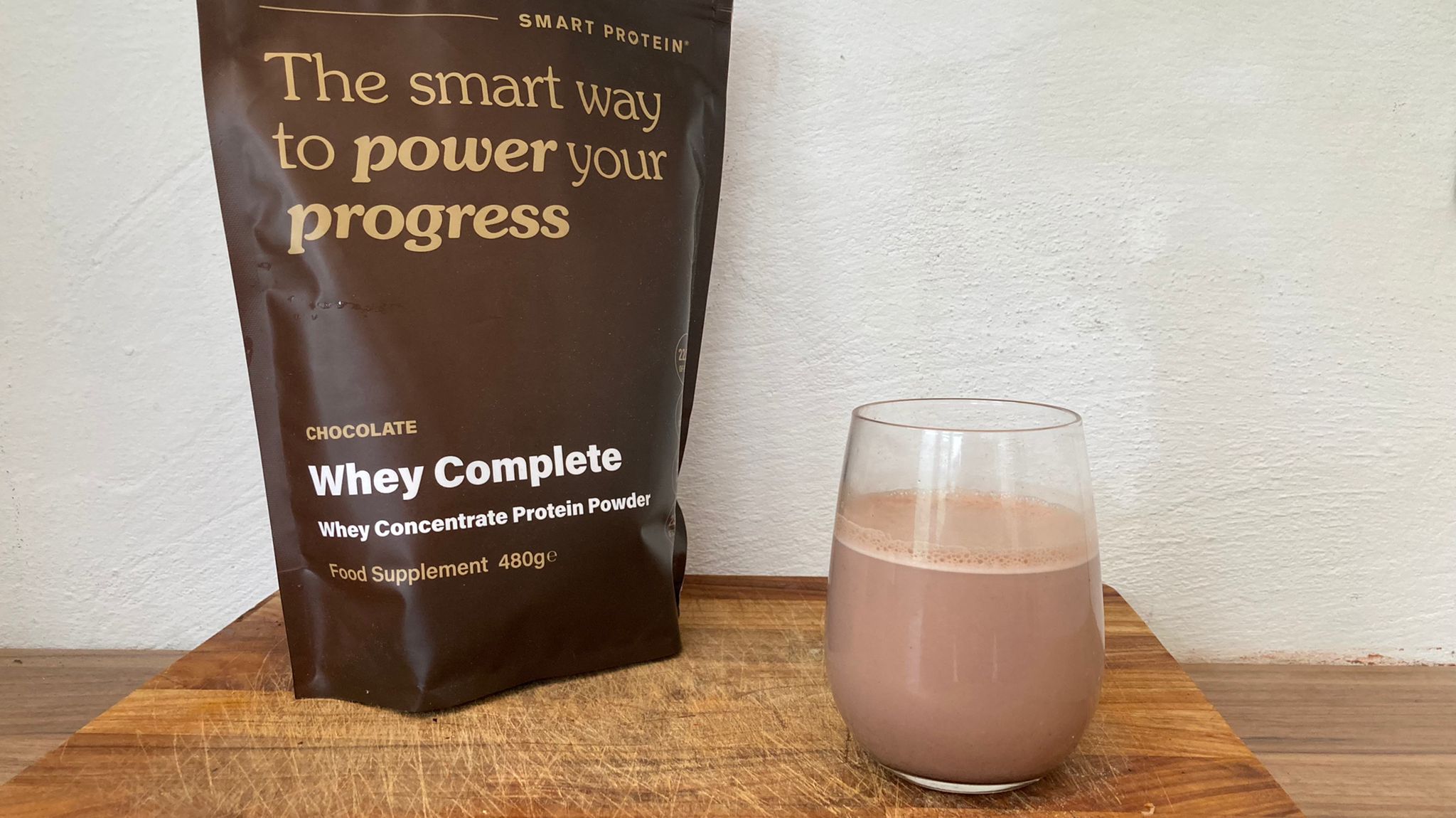
8. Smart Protein Whey Complete
Specifications
Reasons to buy
Reasons to avoid
Smart Protein is a newcomer to the supplement game, and it does a lot right. It’s made with whey concentrate, offering a clean hit of protein (an incredibly specific 22.28g per serving) with minimal calories, fat and carbs.
Taste test: Chocolate
This powder served up a smooth drink with minimal mixing time. The chocolate option isn’t as indulgent as rivals like Optimum Nutrition and Grenade, but that might suit some people. I found the less intense flavor was really easy to drink, making it a solid option as a daily shake.
Best Chocolate Flavor
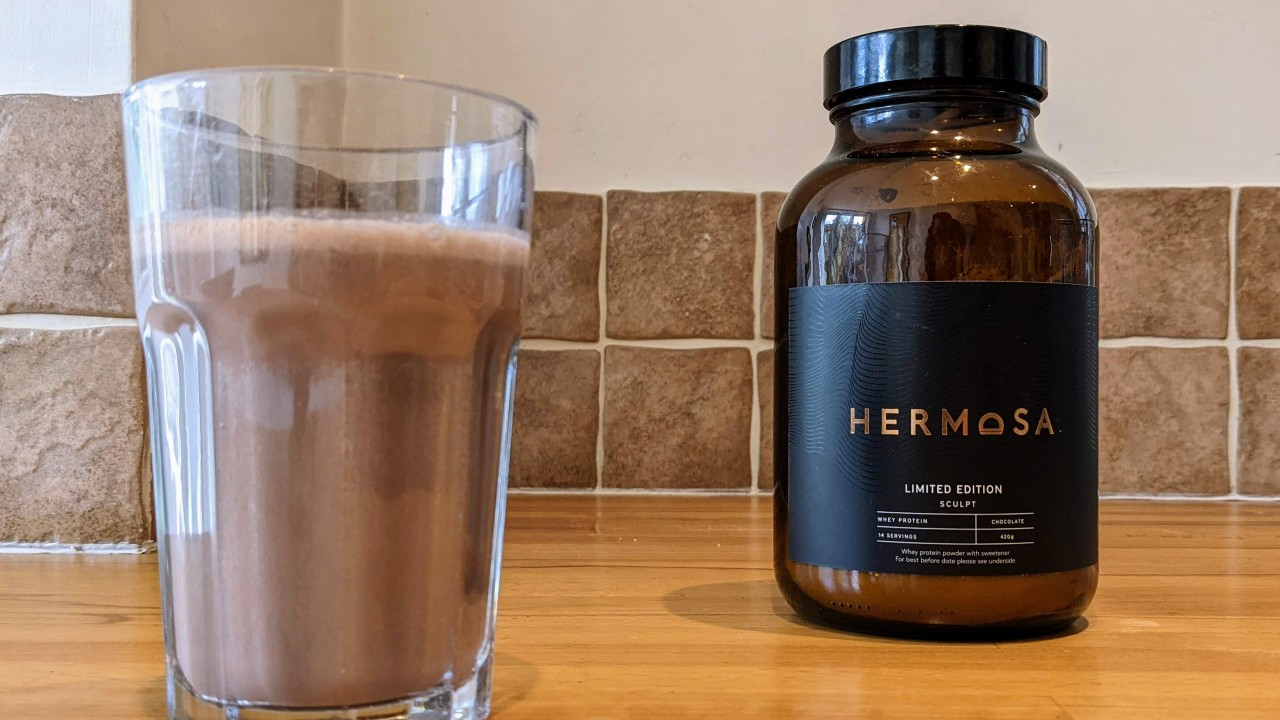
9. Hermosa Whey Protein Powder
Specifications
Reasons to buy
Reasons to avoid
If you’re a fan of bougie workout classes and have a membership at a boutique gym, then there’s a good chance you’ll love Hermosa. The protein shake is aimed at the Lululemon/Barry’s Bootcamp crowd, but it’s more than a status symbol. The 21g of protein per serving is around par, but its flavor is worth the price alone. Although it’s slightly on the calorific side, you can forgive it when what you’re drinking tastes this good.
Taste test: Chocolate The powder mixed well and had a smooth, enjoyable mouthfeel. Even with water, the shake tasted of chocolate (rather than the synthetic profile that plagues some cheaper powders) and its richness would only be enhanced with milk.—CA
More Great Protein Powders
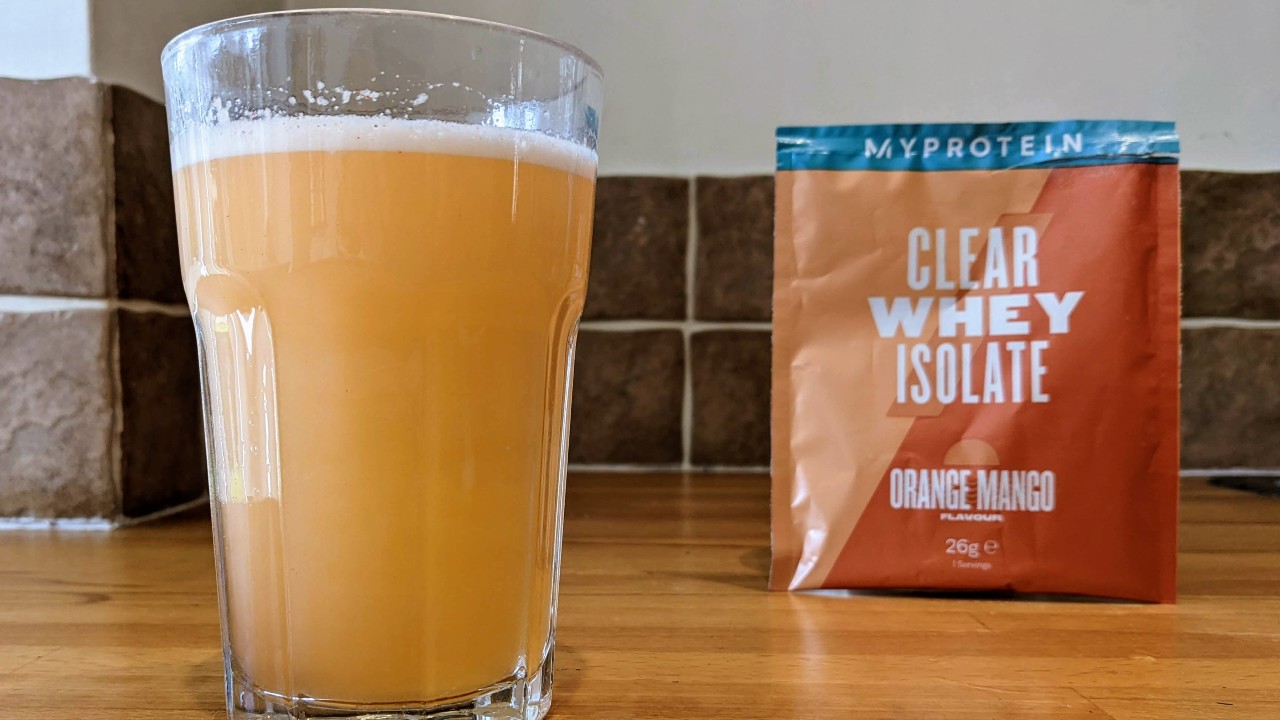
10. Myprotein Clear Whey Isolate
Specifications
Reasons to buy
Reasons to avoid
Myprotein is renowned for producing great nutrition supplements that don’t cost the earth. Its Clear Whey Isolate is slightly pricy when bought at RRP—but as with most Myprotein purchases, it will often be discounted, leaving you with a cost-effective way of getting your protein. Clear Whey Isolate has a high level of protein per serving (20g) without the calories commonly found in whey powders. It also doesn’t have a milky taste or texture—handy if you’re put off by the normal profile of a protein shake.
Taste test: Orange mango The orange mango clear whey isolate had a look and mouth feel much more like an energy drink compared with standard whey protein, making it a refreshing way of refueling that was easy to consume. The orange mango flavor mixed seamlessly and didn’t taste at all like E numbers and additives.—CA
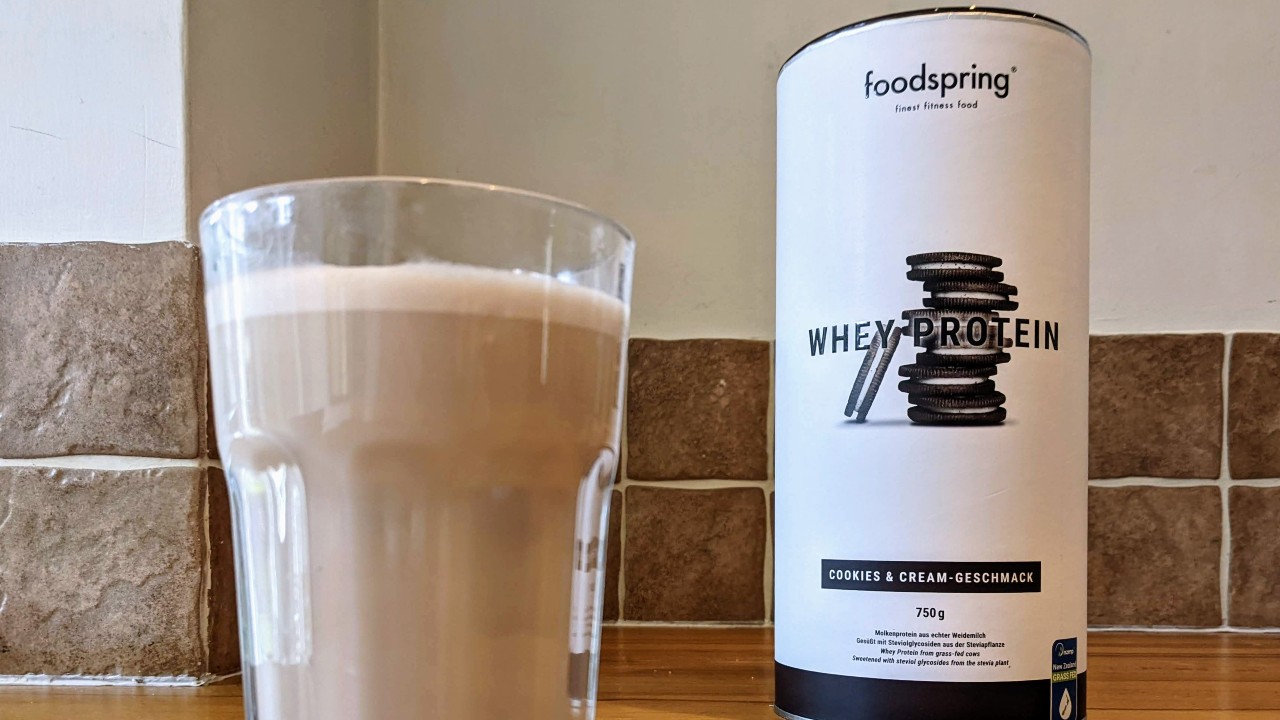
11. Foodspring Whey Protein
Specifications
Reasons to buy
Reasons to avoid
Foodspring tubs look better than most protein powders on the shelf, and their contents taste better than the majority of competitors too. And the authentic flavors don’t come from heaps of hidden sugar. Sugar is replaced with a purified extract of stevia, helping to keep the calorie count down. As a result, the nutrient breakdown is dominated by its 24g protein offering.
Taste test: Cookies and cream Every shake I’ve tried from the Foodspring range has been delicious, but the cookies and cream flavor is a cut above the rest. The taste isn’t that different from the Oreo doppelganger on the front of the tub, balancing the substance of the biscuit element with a creaminess that comes from the filling. The powder also tastes great in porridge or overnight oats, and didn’t leave me feeling too heavy like other protein supplements.—HB
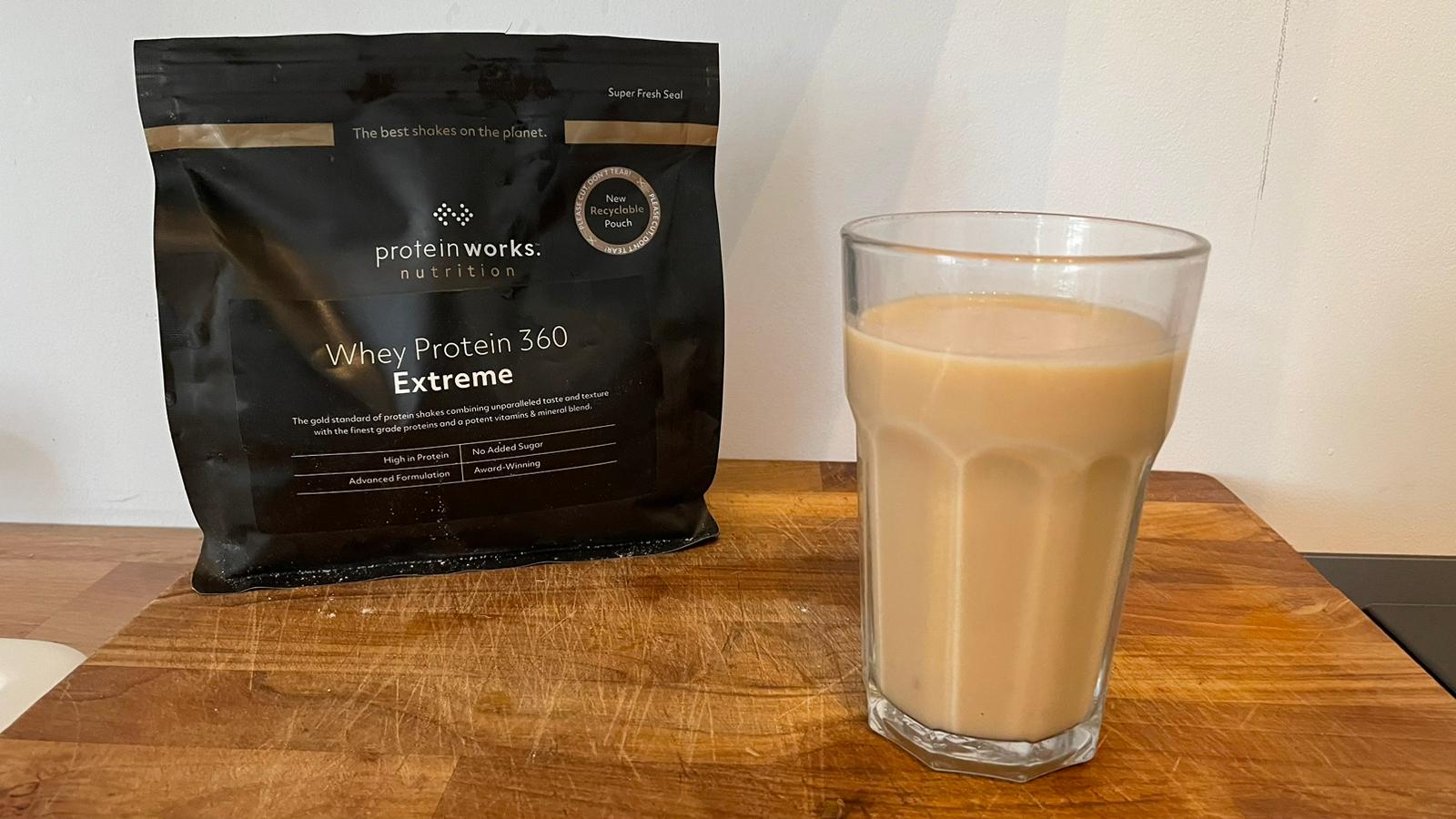
12. The Protein Works Whey Protein 360 Extreme
Specifications
Reasons to buy
Reasons to avoid
This shake delivers a higher-than-average protein hit—25g rather than the usual 20g. This comprises a combination of fast- and slow- release proteins for a “multi-phased release”. Each serving also provides added vitamins, digestive enzymes and glutamine to support your post-workout recovery, digestion and immune system. The larger 35g serving size means you only get 17 servings per 600g bag, rather than the standard 20 per 500g pouch, but this is a small drawback.
Taste test: Speculoos Biscuit Heaven I love Lotus Biscoff flavor stuff—who doesn’t? And while Protein Works’ branding team might not be able to say it, I’m happy to report that the brand’s Speculoos Biscuit option is almost a dead ringer. There were a few small lumps left after the recommended 10 seconds of shaking, but the drink was so delicious that I barely noticed these as I quaffed it in one.—HB
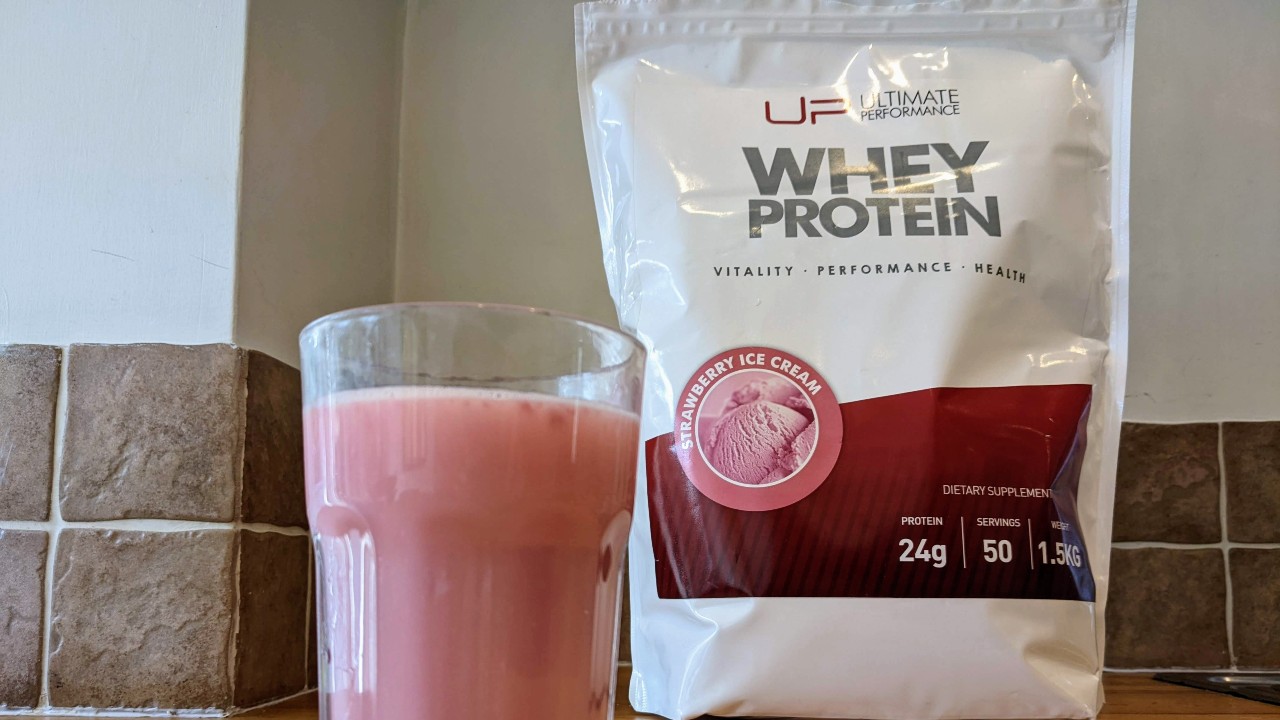
13. Ultimate Performance Whey Protein
Specifications
Reasons to buy
Reasons to avoid
Ultimate Performance’s Whey Protein is the cheapest whey (sorry) to start your protein journey. It doesn’t scrimp on the nutritional side either, leaving you with a well-formulated shake that is relatively low in calories and high (21.8g) in protein. The limited number of flavors may disappoint more adventurous palettes, but they are three classics so they’ll be suitable for most.
Taste test: Strawberry ice cream The luminous pink color of this shake might be a mite off-putting for some, but it didn’t taste half as synthetic as it looked and the only downside was that some clumps were left even after vigorous shaking.—CA
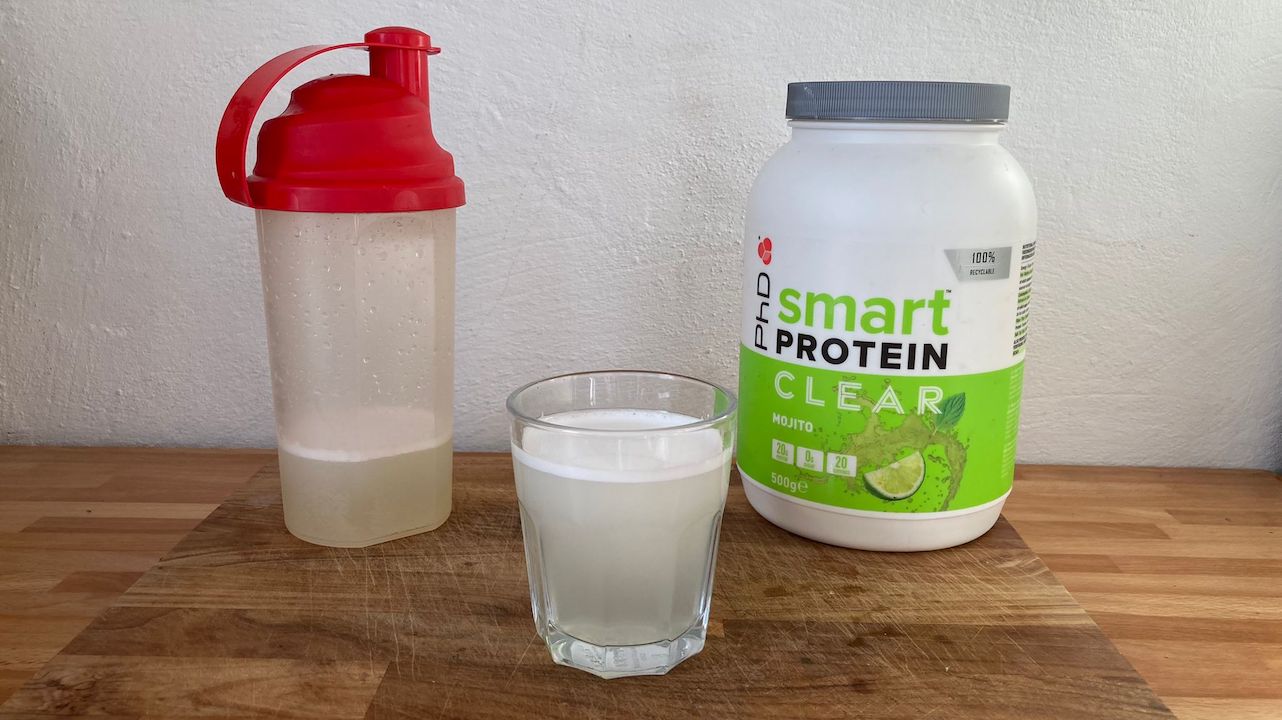
14. PhD Smart Clear Whey
Specifications
Reasons to buy
Reasons to avoid
Leave it to PhD to make a smart protein drink. Enjoy all the benefits of your average shake—20g of protein, low carbs and minimal sugar— without the milky aftertaste, making it a solid pre-exercise option for those in need of a protein boost.
Taste test: Lime and mint This flavor was previously labeled “mojito” and while a pre- or post-workout cocktail may sound unorthodox, somehow this booze-free alternative pulls it off. I found the lime and mint flavor delivered the balance of sweetness and tartness that defines a mojito, making it a refreshing option around exercise. Some extra shaking was needed to get rid of a few stubborn lumps too, but that’s my only criticism.
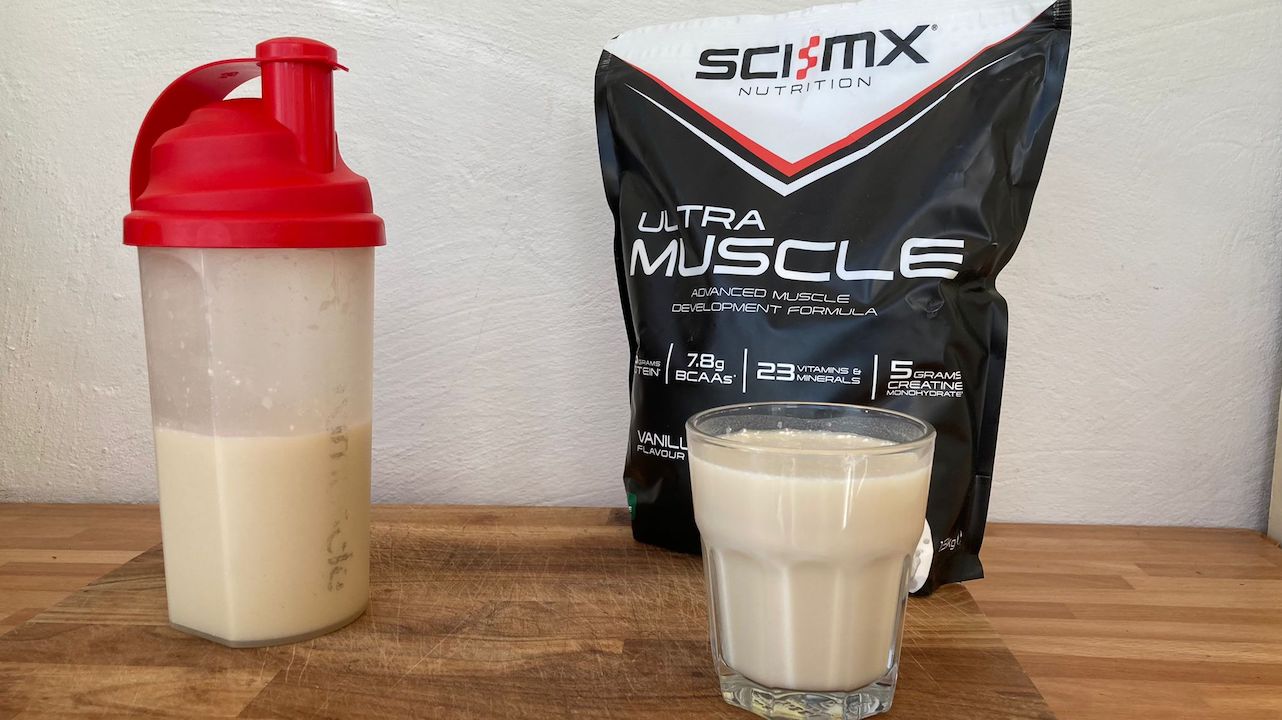
15. Sci-Mx Ultra Muscle
Specifications
Reasons to buy
Reasons to avoid
This protein powder isn’t like others on the list, bragging about offering a clean protein hit with most other macros kept to minimal amounts. Instead, it’s designed for those looking to pack on mass and/or support their sporting performance, dealing out a hefty 75g of carbs and 548 calories per serving. You’re also getting 5g of creatine and 7.8g of BCAAs.
Taste test: Vanilla I’ve had bad experiences with mass gainers and their ilk before, with cement-like textures, cardboardy flavors and post-drink bloating that leaves a bitter taste in my mouth (often literally). The 150g serving size here left me worried about more of the same, but it was fairly smooth and the flavor—while definitely on the sweeter side of my usual shakes—was enjoyably drinkable. There were some small lumps left in the mixture after 20 seconds of shaking, so make sure you mix well before guzzling.
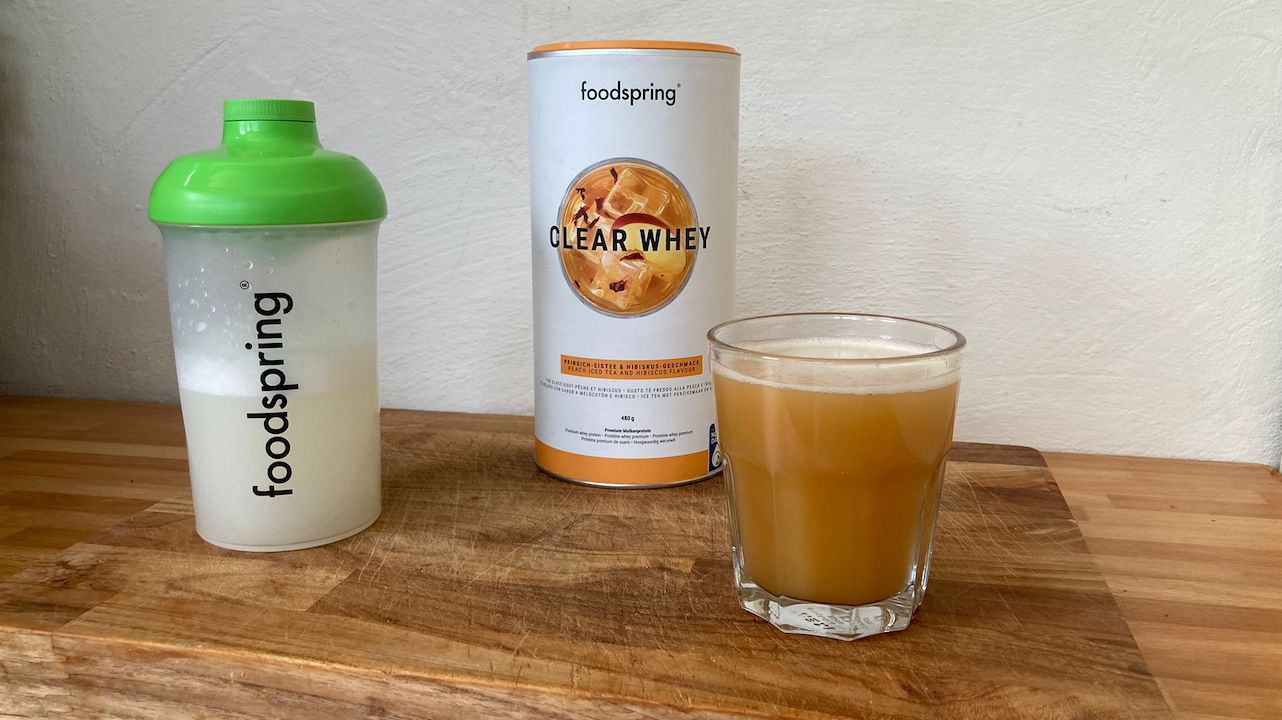
16. Foodspring Clear Whey
Specifications
Reasons to buy
Reasons to avoid
Some protein powders promise a lot, with added BCAAs, creatine, glutamine and whatever else to boost your performance. This Foodspring shake keeps things more simple: It’s high in protein (25g per 30g serving) without coming with extra unwanted carbs (less than a gram) or calories (112). As an aside, the attractive tub design also deserves some recognition.
Taste test: Peach iced tea and hibiscus After a hard workout, the last thing I want is a creamy protein drink to challenge my innards. Clear whey is a welcome alternative, although I’ve found many flavors too sweet to quaff post-metcon. Foodspring’s peach iced tea and hibiscus offers a Goldilocks-like balance, offering a light and refreshing texture with a pleasant, understated flavor that I’d genuinely choose over many fruit drinks.

17. Healthspan Elite All Blacks Ultimate Whey Protein Blend
Specifications
Reasons to buy
Reasons to avoid
This protein powder ticks a lot of boxes, with 24g of protein and 5.7g of BCAAs per serving, as well as fairly standard amounts of calories (138) and carbs (5.7g). One slight gripe is that each scoop is a hefty 37.5g, which means you’re getting fewer drinks from each pouch. But it promises rigorous testing “for a wide range of substances banned by the World Anti-Doping Agency (WADA)”—important if you’re a serious athlete.
Taste test: Chocolate Healthspan’s clear whey is one of the tastiest supps I’ve tried, unlike the brand’s mass gainer, which was among the worst. This sits right in the middle with a slightly earthy flavor that’s drinkable but nothing to write home about. It mixes well, especially considering its larger serving size, which is always a plus.
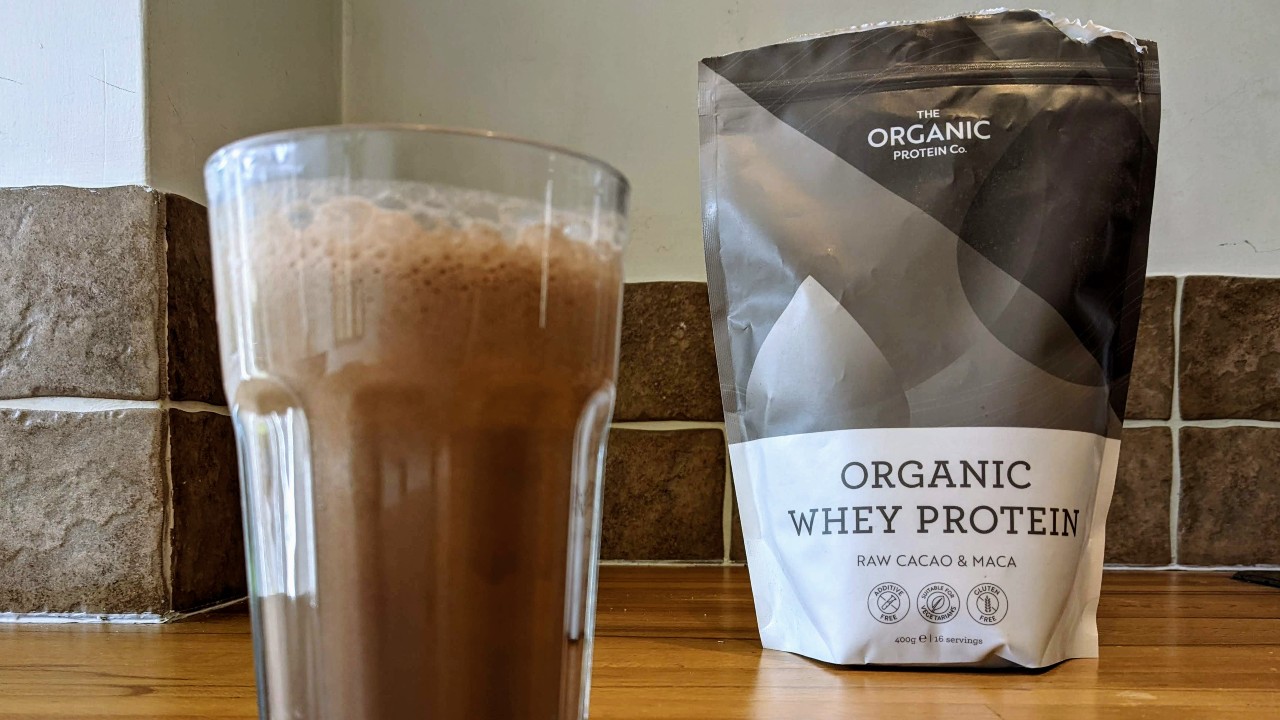
18. Organic Protein Company Whey Protein
Specifications
Reasons to buy
Reasons to avoid
This whey from the Organic Protein Company does what it says on the tin (bag, really). Made with five ingredients—in contrast to some of the lengthy lists of additives seen elsewhere—it’s one of the “cleanest” whey protein powders on the market. The downsides of this are a relatively small serving of protein per serving and flavors that won’t be to everyone’s tastes. Even so, its sub-100 calories will tick the boxes for those looking for the benefits of protein without calorie gains elsewhere.
Taste test: Raw cacao and maca Cacao is an acquired taste and it’s bitter compared with the milk chocolate many of us know and love. Once you get over the initial shock, the shake is drinkable, though it remained watery, with a grittiness from unmixed powder.—CA
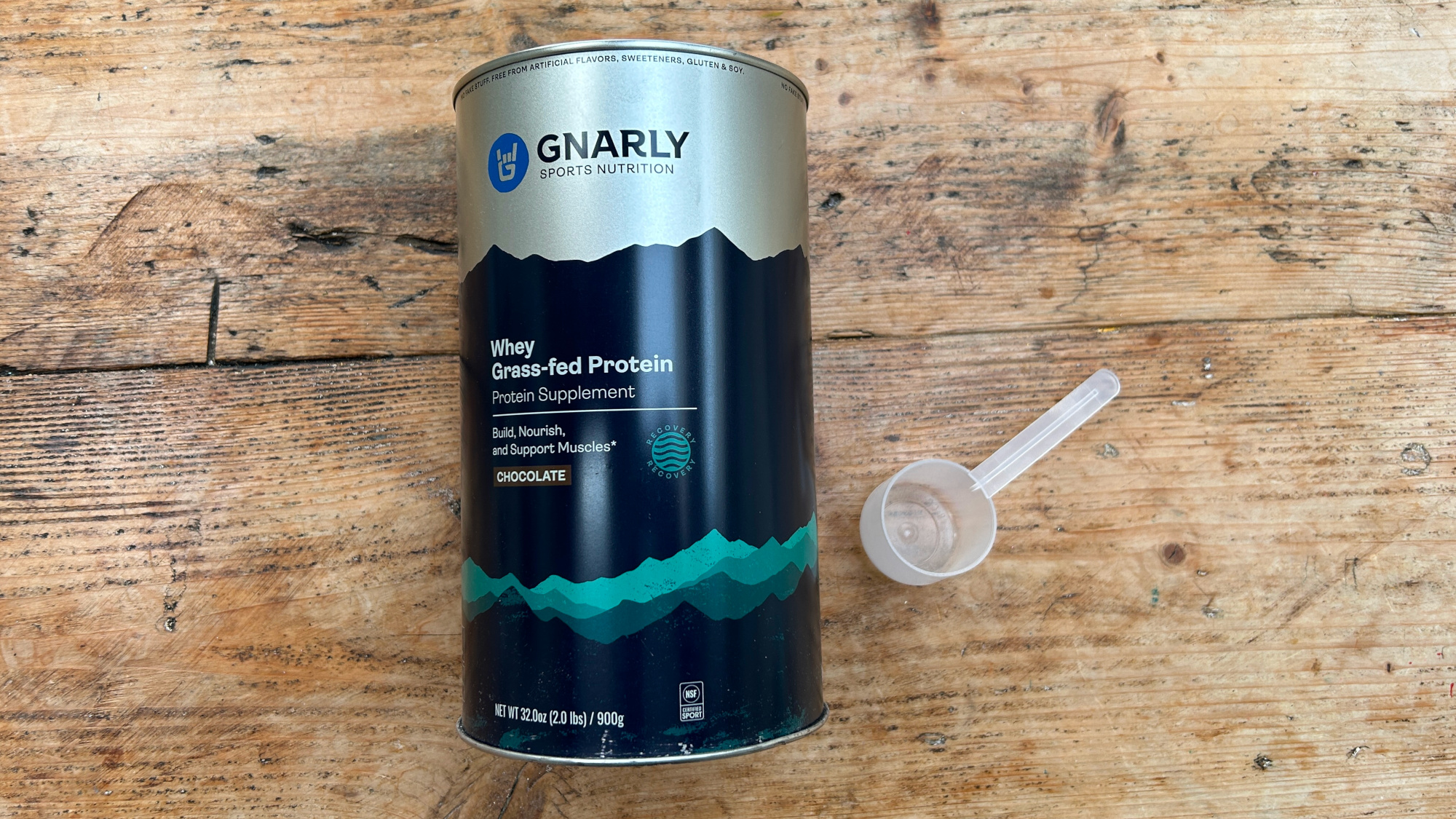
19. Gnarly Sports Nutrition Grass-Fed Whey
Specifications
Reasons to buy
Reasons to avoid
Gnarly’s whey concentrate powder is a little higher in carbs than most non-recovery powders, but that will help to top up your energy levels if you’re using it to recover after HIIT or cardio sessions. Along with 25g of whey, each serving also contains prebiotics and probiotics to support your gut health, as well as digestive enzymes to help the shake settle in your stomach.
Taste test: Chocolate The powder mixes very easily and the texture of the drink is silky smooth without any lumps at the bottom. The chocolate flavor was the typical bland affair you get from protein shakes, but entirely inoffensive and easy to get down in a hurry. Gnarly could use a few more flavors in its range, though, with only chocolate and vanilla available.—Nick Harris-Fry
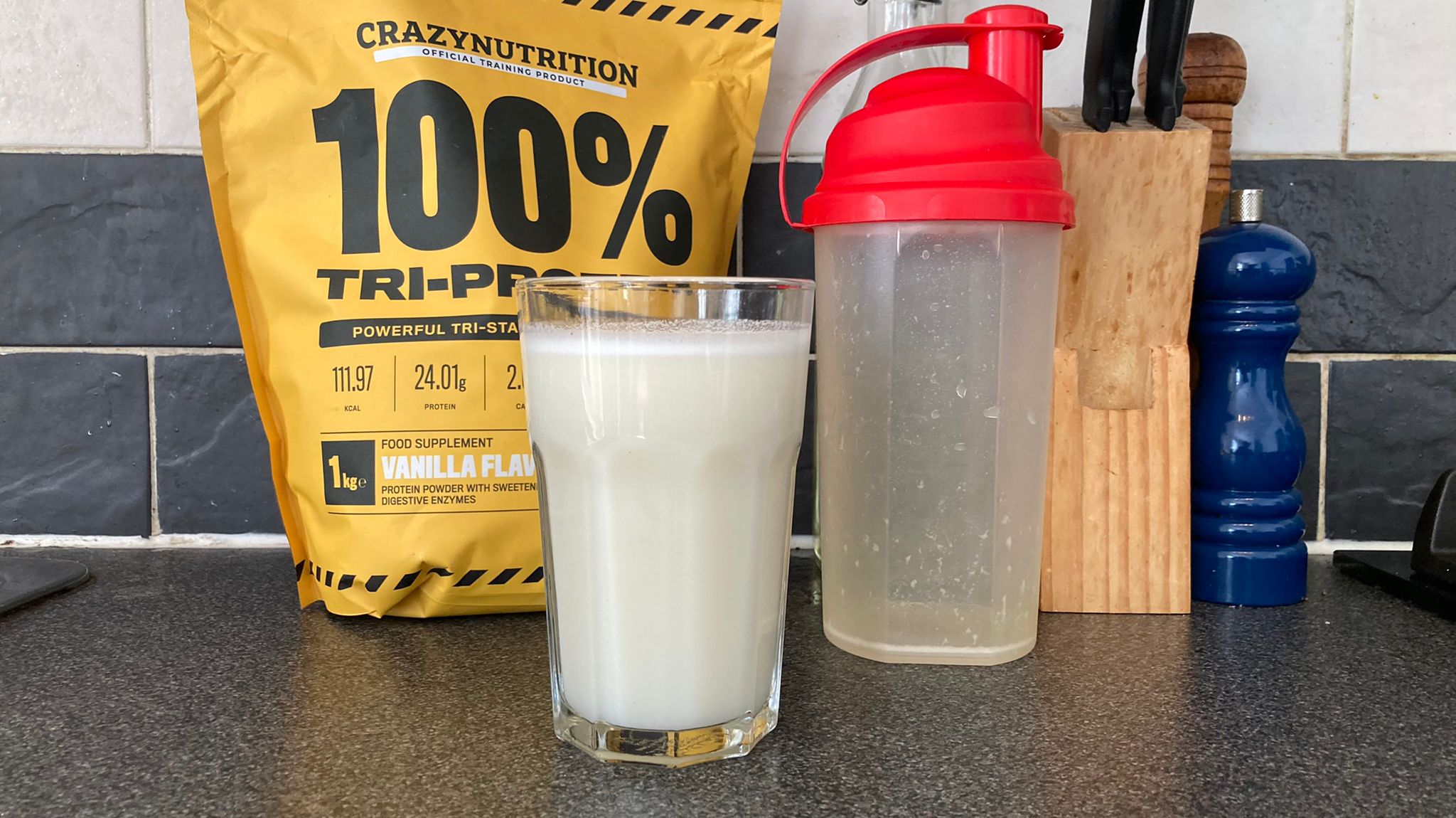
20. Crazy Nutrition 100% Tri-Protein
Specifications
Reasons to buy
Reasons to avoid
Tri-Protein’s pitch is that it mixes six types of protein powder which will be absorbed at three different rates to avoid stomach aches and curb hunger pangs. Whey isolate and hydrolysate is digested in the first phase, followed by whey concentrate and milk protein concentrate, and finally micellar casein and calcium caseinate. It’s worth bearing in mind that our expert calls milk powders a “cheap bulking agent” below which are high in lactose.
Taste test: Vanilla I can’t validate Crazy Nutrition’s digestion claims with a simple taste test, but necking this shake after a workout did leave me feeling less heavy than most whey powders. It tasted good too, although the texture was quite thin when mixed with water. Where it really excelled, however, was in recipes; namely, protein pancakes and a protein cheesecake. It added a pleasant flavor to both without proving overpowering or leaving any unwanted lumps in the mixtures.—HB
Best Protein Powder Buyer’s Guide
Picking between the huge range of protein powders available is difficult, especially when each and every one of them makes grand promises about the effect they will have on you.
You might assume that all of them do the same job, but that’s not the case, as we discovered when we quizzed Dr Daniel Fenton, clinical director and GP at London Doctors Clinic.
What are the key things people should look out for when looking for the best protein powders?
“How much protein you obtain from each serving, the amino acid profile, the cost, taste and number of additives are a few key factors. I tend to focus on yield—the actual amount of protein you obtain from each serving—and amino acid profile.
“I suggest you choose a low-fat, low-carbohydrate, high-protein powder. While you require all three to aid muscle development, balance is key.
“The difference in protein content in various powders can be phenomenal. Do not simply pay for a brand name – the proof is in the numbers. Look carefully at the concentration and type of branched-chain amino acids (BCAAs) included in the protein. Leucine has been shown to be one of the most important BCAAs so it should contain decent quantities.”
What should you get if you pay more money for protein powder?
“There is a natural tendency to think that more expensive products are better—but this is a fallacy. Content is more important than cost. All protein powders will contain some additives including thickeners, preservatives, sweeteners and fillers.
“I would strongly recommend taking a look at the label before you purchase. While your main focus is gaining muscle, you should aim to avoid putting nutritionally-redundant chemicals into your body. Here are a few of the things to look out for.
“Avoid artificial sweeteners, which includes sucralose, aspartame and saccharin. The presumption is that these are better for you than sugar but this is not quite true. There is no good evidence that they reduce weight gain, type 2 diabetes or metabolic syndrome and some studies actually show an increased risk of adverse health outcomes.
“Milk powders are a cheap bulking agent widely used in protein powders. They are high in lactose sugars which is terrible if you are lactose intolerant. This can contribute to gastrointestinal upset including bloating and loose stools.
“Oils and fats are added to protein supplements to increase richness; they are non-essential ingredients which can contribute to hypercholesterolemia [high cholesterol]. It is fairly common to see high cholesterol levels in bodybuilders and athletes despite their immense fitness levels and generally healthy eating—taking protein powder with added oils is thought to be a contributing factor.”
Is it worth looking out for extra benefits from protein powder such as vitamins and minerals, or fibre?
“The simple answer is no! While these make for an excellent selling point, if you are eating a balanced diet alongside the protein supplement you should not need additional vitamins.”
Is there a limit to how much protein the body can absorb from a serving?
“The human body is an impressive machine, which likes to maintain a balanced constant internal environment. We can fill ourselves with protein, but we will only absorb as much as we require for muscle synthesis.
“The Department of Health recommends approximately 55g of protein a day for male adults and a little less for females. Obviously, if we exercise at high intensity, muscle turnover is higher and protein demand is therefore greater, so we will often require more than this. But if we consume too much protein, the body will simply metabolize and excrete it. This means you could literally be flushing money and protein down the pan.”
What protein powder is best for muscle gain?
Let’s face it, you’re not chugging protein shakes down for the sheer pleasure of it. You want more muscle, so we asked Lily Chapman to cut to the chase.
“Overall intake should be a priority,” says Chapman. “In order to accelerate muscle gain, you should aim to consume around 1.6-2.0g of protein per kg of bodyweight every day. For example, a 70kg individual should consume between 112-140g of protein across the course of their day.” That tallies with the target suggested by a dietitian when we asked how much protein you need to build muscle.
There are three more factors that make some types of protein better for muscle gain than others. “Choose a powder that has a high amount of protein per serving, is ‘complete’ in relation to amino acids, and has a high digestibility or bioavailability rate. The latter is measured by either the Protein Digestibility Corrected Amino Acid Score (PDCAAS) or the Digestible Indispensable Amino Acid Score (DIAAS).
“Whey isolate, casein and soy all have similar PDCAAS and DIAAS values and are therefore regarded as the ‘best’. Strength-based studies have also found muscle protein synthesis to be more stimulated following ingestion of these, in comparison with other protein types.”
Types Of Protein Powder
The most common type of protein powder product will create a shake that contains protein and virtually nothing else. These are designed to fuel lean muscle growth following a workout, and so avoid extra carbs and sugars and keep the calories to a minimum to deliver on the “lean” part.
Mass gainer shakes go in the other direction and contain huge amounts of everything. They are high in calories and carbs as well as having more protein than a standard shake. People tend to use mass gainers during a period of bulking up, usually during the winter before cutting (reducing body fat but retaining muscle) in the spring, a well-worn bodybuilding technique. A mass gainer is useful for those in serious physique training, but less so when you’re just aiming for a higher protein intake each day.
Recovery shakes are another common option, and these are aimed more at endurance athletes who need a high amount of carbs and electrolytes as well as protein to recover after their training sessions. Recovery protein powder often also contain vitamins and minerals to support the immune system, and are popular with those who play team sports like football and rugby, as well as among runners, cyclists and swimmers.
Meal replacement shakes are generally categorized as entirely different products from protein shakes, but often use whey protein and can have a similar nutritional profile as recovery shakes. Meal replacement shakes can be used as a meal substitute when you’re short on time, or they can be a low-calorie option that helps you to lose weight. They often are high in protein to increase satiety while still low in calories overall.
What are the differences between whey and casein?
“Whey versus casein can be seen as fast versus slow protein,” says Fenton.
“Muscle growth is determined by simple science: protein (muscle) breakdown vs protein synthesis. If the synthesis of new muscle protein is greater than the breakdown of muscle protein, you will get a net gain of muscle mass.
“Whey is typically processed very rapidly into amino acids, which will reach peak levels within an hour of consumption and therefore assist muscle synthesis very quickly. However, the peak levels also fall very quickly.
“Whey is considered an anabolic protein because it rapidly accelerates protein synthesis so it’s great for quick muscle regeneration, but has very little effect on naturally occurring muscle breakdown after a workout.
“Casein can take several hours to be metabolized and as a result creates a slower release of proteins to help muscles recover and grow. It is often referred to as an anti-catabolic protein, because it also helps to prevent excess protein breakdown.
“The downside is that casein will remain in the stomach for a substantial period of time, and one can appreciate that it is difficult to complete a high-intensity workout with a full stomach.
“In essence, balance and timing are key for maximum gains. Ignore those who say ‘casein is the key’, or ‘only whey works’ – scientifically, this is simply untrue. Both work very well if used appropriately, complementing your workout and your own natural metabolism.”
Glossary
Whey protein
Whey is the liquid portion of milk, which separates from the rest during cheese production. A mixture of proteins can be isolated from this whey and processed into whey protein powder which contains all nine essential amino acids, making it a complete protein source. This is then used as a supplement by people who want to increase their protein intake, build muscle and support athletic performance.
Casein protein
Whey makes up about 20% of the protein content of cow’s milk, while casein fills the remaining 80%. Like whey, casein is a byproduct of cheesemaking and can also be made into a powder then used as a supplement, providing the amino acids needed to build muscle. However, it’s not absorbed as quickly as other protein sources like whey, so many people take this supplement before fasted periods like a night's sleep.
Whey protein concentrate
Whey protein can come in three forms: concentrate, isolate and hydrolysate. They are all made from whey obtained during cheese production, but each one is produced slightly differently to deliver distinct features and nutritional profiles. Whey concentrate goes through less processing, and tends to be the cheapest of the three as a result. But it has a slightly lower protein content and a few more grams of carbs, fat and lactose than more processed forms.
Whey protein isolate
Whey protein isolate undergoes extra processing steps to deliver a higher protein content than whey protein concentrate, as well as negligible (1g or below) amounts of carbs, fat and lactose. That means it is usually more expensive than whey protein concentrate.
Whey protein hydrolysate
The benefit of whey protein hydrolysate is that it’s absorbed more quickly than other forms of whey protein because it has been pre-digested. This makes it a popular post-workout option. A 2019 study into its use concluded that “ingestion of the whey protein hydrolysate was associated with greater post-exercise muscle protein synthesis compared with intact whey protein”.
Clear whey isolate
Clear whey isolate is a fairly new innovation in the supplement world. The main difference from other whey shakes is the texture, which is light and watery in contrast to the usual creamy drinks. Despite this, it still delivers a high protein content with minimal carbs, fats and sugars, while also having a lower calorie content than most standard whey supplements. It is usually more expensive though.
BCAAs
BCAAs stands for branched-chain amino acids. Amino acids are molecules that combine to form proteins, which the body can use to maintain and build muscle. The body needs 20 amino acids to function properly, and nine of these fall under the bracket of “essential amino acids” which can’t be created by the body and need to be consumed as food. Three essential amino acids—leucine, isoleucine and valine—are classed as branched-chain amino acids in reference to their chemical structure.
BCAA supplements are sold with the listed benefits of helping maintain and contribute to the growth of muscle mass. A study published in the journal Nutrients also found that BCAA supplementation over eight days “decreased perceptions of soreness in resistance-trained individuals with several years of experience”.
EAAs
EAAs stands for essential amino acids—the nine necessary amino acids your body cannot produce and which need to be consumed. EAA supplements aim to deliver these amino acids, including all three BCAAs, in powder form.
Suggested benefits of EAA supplementation overlap heavily with those listed for BCAAs. These include improved exercise performance and boosted recovery.
Creatine
Creatine can be found in protein-rich foods such as red meat, seafood and animal milk, as well as supplements. It’s one of the most heavily researched supplements on the market and one of the most popular, boasting benefits such as improved exercise performance, enhanced recovery, and increased strength and muscle mass.
When creatine is delivered to your muscles, it can merge with phosphate to create phosphocreatine, which is then stored. When needed, this can then be used for rapid energy production—useful in speed and power sports like powerlifting and bodybuilding.
Leucine
Leucine is one of the three branched-chain amino acids described above. It can be taken as a supplement.
It is suggested that these amino acids can be used by muscles to provide energy during exercise and improve exercise performance. However, a University of Rochester article states that “studies have not consistently shown that taking supplements of these amino acids improves exercise performance, builds muscle mass or helps you recover from exercise”.
Isoleucine
Despite the similar name, isoleucine is a separate amino acid from leucine, and another in the group of nine essential amino acids. It is also a branched-chain amino acid and can be bought as a supplement, as well as featuring in BCAA powders.
Reported benefits include helping control blood sugar, improving endurance, speeding up the healing of injured muscle and supporting muscle growth, according to the University of Rochester research.
Valine
After leucine and isoleucine, valine is the third and final branched-chain amino acid. It is available as a supplement and will also be present in BCAA powders. As such, it is often taken to support muscle growth, enhance athletic performance and boost the immune system.
Get the Coach Newsletter
Sign up for workout ideas, training advice, reviews of the latest gear and more.

Harry covers news, reviews and features for Coach, Fit&Well and Live Science. With over a decade of training experience, he has tried everything from powerlifting to gymnastics, cardio to CrossFit, all in a bid to find fun ways of building a healthy, functional body.
- Nick Harris-FrySenior writer
- Charlie Allenby
